#cyril vaughan
Explore tagged Tumblr posts
Text
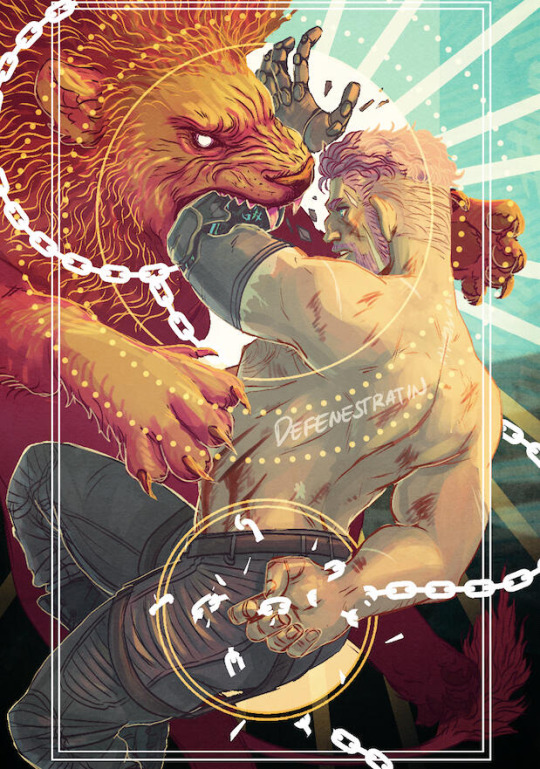
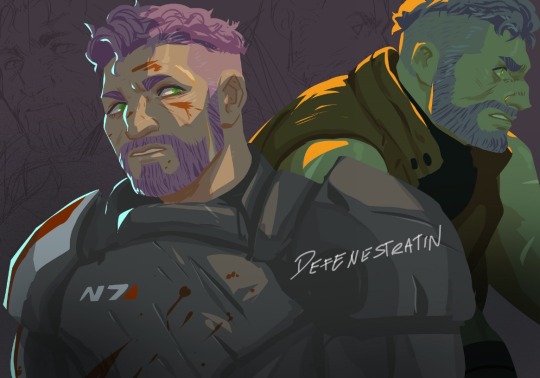
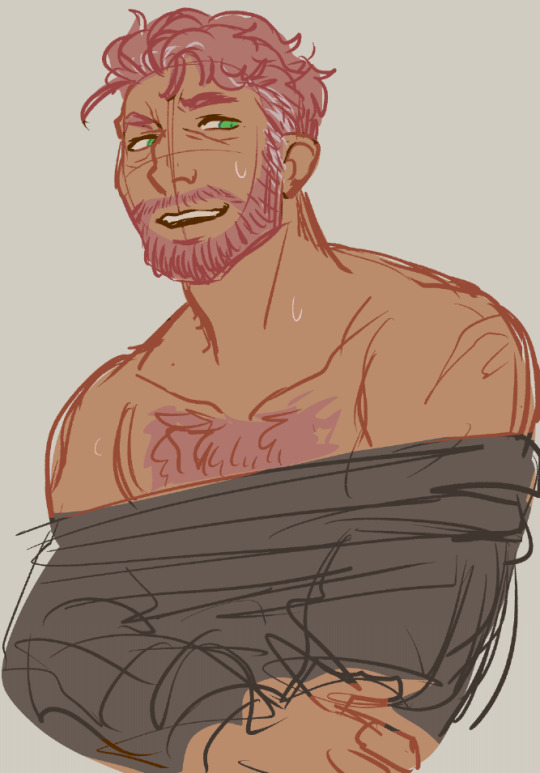
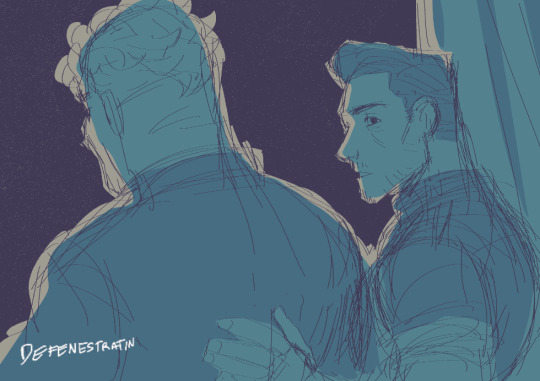

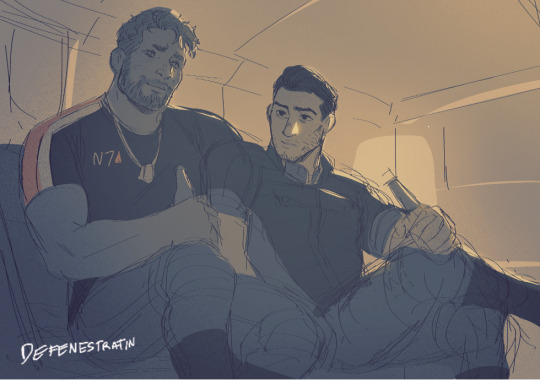
Turns out I share the same birthday as Commander Shepard!! That’s sick as hell hehe
Some old-ish art and doodles of when I was replaying the ME trilogy during some medical stuff!
Bonus Cyril and Mal since I have brainrot about them
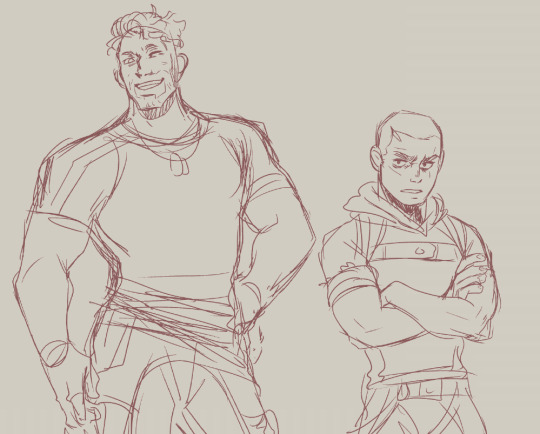
#mass effect#commander Shepard#kaidan alenko#mshenko#my art#doodle#mmmmm I guess I’ll still tag him asssss#cyril vaughan#and I’ll add in#malcolm reeves#i have SO much brainrot I hope I can be self indulgent abt them and share sometime#anyway happy birthday to me!!!#the tarot illu is much older but it’s quintessentially cyril so I couldn’t not include it again#oc
573 notes
·
View notes
Text
"OUR MUTUAL FRIEND" (1998) - Second Review

"OUR MUTUAL FRIEND" (1998) Second Review
Several years ago, I had written a review of "OUR MUTUAL FRIEND", the BBC's 1998 adaptation of Charles Dickens' 1865 novel. Needless to say, my opinion of it proved to be mixed. But after numerous re-watches of the four-part miniseries, I came to the conclusion that my views had undergone a tremendous change . . . as the following new review will convey.
During my recent re-watch of "OUR MUTUAL FRIEND", I continued to find it a complicated tale. It featured at least four subplots (and not three, as I had originally assumed). And they all stemmed from the alleged death of John Harmon, the estranged heir to a fortune created by his father, a former collector from London's rubbish. "OUR MUTUAL FRIEND" began with a solicitor named Mortimer Lightwood informing the circumstances on the death of his late client and the details of Mr. Harmon Sr.'s will to his aunt and a group of listeners at a London society party. According to Lightwood, Mr. Harmon made his fortune from London's rubbish. The terms of his will stipulated that his fortune should go to John, returning to Britain after years spent abroad. The will allowed John to inherit his father's money on the condition that he marry a woman he has never met, Miss Bella Wilfer. However, Lightwood received news that John Harmon's body had been found in the Thames River. He and his close friend, Eugene Wrayburn, head toward the river to identify the body. And it was this sequence that led to the following subplots:
*Mr. Harmon's employees, Nicodemus and Henrietta Boffin inherit the Harmon fortune and take Bella Wilfer on as a ward/companion to compensate for her loss, following John Harmon's "death".
*John Harmon fakes his death and assumes the identity of John Rokesmith, the Boffins' social secretary, in order to ascertain Bella Wilfer's character.
*Gaffer Hexam, the waterman and scavenger who found Harmon's "body", ends being accused of murdering "Harmon" by Hexam's duplicitous former partner, Roger "Rogue" Riderhood.
*While accompanying his friend, Mortimer Lightwood, to identify Harmon's body, Eugene Wrayburn meets and falls in love with Hexam's daughter, Lizzie.
*Bradley Headstone, the schoolmaster of Charley Hexam, Lizzie's younger brother, develops a romantic, yet violent obsession with Lizzie and a deep hatred of Eugene.
*Mr. Boffin hires a ballad-seller with a wooden leg named Silas Wegg to read for him. When he finds Harmon's will in one of the Harmon dust piles, Wegg schemes with a taxidermist named Mr. Venus to blackmail the newly rich dustman.
*Mr. and Mrs. Lammle, a society couple who had married each other for money and discovered that neither had any, plot to swindle Mr. Boffin of his money.
I have experienced a handful of movies, novels and television shows in which disparate subplots eventually form into one main narrative. A major example of this was the 2002 novel and its 2008 movie adaptation, "MIRACLE AT ST. ANNA". But I cannot recall any form of fiction in which a particular narrative divides into a series of subplots from one main action or character. When I first saw "OUR MUTUAL FRIEND", I found this narrative device not only original, but rather disconcerting.
The problem I initially had with "OUR MUTUAL FRIEND" was that I only enjoyed only one major subplot - the bizarre "love triangle" between Eugene Wrayburn, Lizzie Hexam and Bradley Headstone. I cannot deny that I found it very interesting and very tense. Yet another re-watch of the miniseries made me aware of the mistakes I had made in judgment. One, my views of the miniseries' other subplots turned out to be more interesting than I had initially assumed. It finally occurred to me how wealth, greed and/or class played major roles in Dickens' story. The Harmon fortune had attracted greedy types like Silas Wegg and the Lammles. Even Bella Wilfer was willing to use the Boffins to find a wealthy husband within London's high society. Gaffar Hexam's discovery of the fake John Harmon's body and the reward he had received led his greedy and jealous former partner to accuse him of murder.
John's deception also exposed a good deal of class bigotry in this tale. Upper-class types like Lady Tippins seemed appalled at the idea of lower-class citizens like the Boffins inheriting a large fortune. She seemed to harbor this attitude that attorney Mortimer Lightwood should automatically take control of the Harmon fortune. As the Boffins' protégé, Bella initially regarded John as beneath her, due to his position as the Boffins' social secretary, John Rokesmith. Class bigotry practically reeked throughout the love triangle between Lizzie, Eugene and Bradley. Despite being in love with Lizzie, the upper-class Eugene seemed more wiling to view her as a potential mistress, instead of a wife. Bradley Headstone, who came from the same class as Lizzie, seemed more than willing to marry her. Yet, he also regarded her as being socially beneath him, due to her lack of education. He seemed to believe Lizzie should be grateful to marry him and reacted with surprise when she rejected his offer. And Eugene not only regarded Bradley as a romantic rival, but also as a man who was socially beneath him. The miniseries ended with Mortimer Lightwood attending a society party aboard a River Thames steamer. He and a shy man named Mr. Tremlow defended a particular marriage that crossed class lines, despite the other partygoers' disapproval and contempt. This ending is one of the main reasons I truly enjoy this adaptation of Dickens' novel. I found it emotionally satisfying, yet very poignant.
Sandy Welch made some changes in Dickens' narrative. Instead of pursuing heiress Georgiana Podsnap and attempting to trap her into marriage with fortune hunter Fascinating Fledgby, Alfred and Sophia Lammles set their sights on the Boffins' money. Welch's screenplay had excluded Fledgby altogether, along with his moneylending business. These changes made sense to me, considering the Lammles' arc with Fledgby and Miss Podsnap had nothing to do with John Harmon or his fortune. The Lammles met a nameless heiress (a stand-in for Georgiana Podsnap?) at a rail station near the end, as they boarded a train for Dover and the English Channel. Due to Welch's erasure of the Fledgby character, she reduced Mr. Riah's character as a close friend of both Lizzie and her friend, dollmaker Jenny Wren. Mr. Riah only played a role by helping Lizzie find a job outside of London.
It seemed a pity that Welch had eliminated the Fledgby character and his arc with Mr. Riah. It would have given the miniseries a peek into Victorian anti-Semitism, something the novel managed to achieve on a small scale. But as I had pointed out - Fledgby and Mr. Riah's arc had no connection to John Harmon, his fortune and his deception. To understand what I am trying to say, let me clarify. All of the other arcs in "OUR MUTUAL FRIEND" either began with Mr. Harmon Sr.'s will or with John Harmon's actions following his arrival in London. The former's will led John to create and participate in his deception in order to judge Bella. If Mr. Harmon had not made that condition for John to marry Bella in order to inherit his fortune, chances are John would have never conceived his deception. He would have never been attacked by the man he had recruited to impersonate him. Hexam would have never found the impersonator's body and found himself falsely accused of murder by his former partner.
Even if Mr. Harmon's will had not changed, John could have simply adhered to and inherit his father's fortune, leading to a possible loveless marriage to Bella. With no body to find, Mortimer and especially Eugene would have never met Lizzie. As Charly Hexam's tutor, Bradley Headstone probably would have met Lizzie and fallen in love with her anyway. But I believe she still would have rejected him. It is possible the Lammles would have focused their attention on John. But I suspect they would have very little success in befriending him. If John had immediately inherited his father's fortune, the Boffins would have inherited one of the Harmons' dust piles. Does this mean Mr. Boffin would have hired Wegg as his reader anyway? I wonder.
I cannot deny that "OUR MUTUAL FRIEND" did such an excellent job in exploring the effects of wealth, greed and class in Victorian London. All or most of the subplots seemed to flow from John Harmon and his decision to fake his death. Like the River Thames that flows through southern England and London. Is it any wonder that Dickens had decided to set his novel along the river - even outside of London? The story began with Lizzie and and her father scavenging along the Thames and ended on that lovely moment when both Mortimer and a shy man named Mr. Tremlow defended a recent marriage that crossed class lines at a society party aboard a steamer on the river.
As for the production values for "OUR MUTUAL FRIEND", I still remain impressed as ever. David Odd's cinematography still strikes me as colorful and epic. I am not surprised that he had received a BAFTA Award nomination for his work. Malcolm Thornton won a BAFTA Award for the miniseries' excellent production designs. His recreation of mid-19th century London and the River Thames struck me as colorful, well-detailed and just outstanding. Mike O'Neil had earned a BAFTA nomination for his costume designs. A part of me wish he had won. I still find them beautiful and a near reflection of Britain in the 1860s, as shown in the images below:

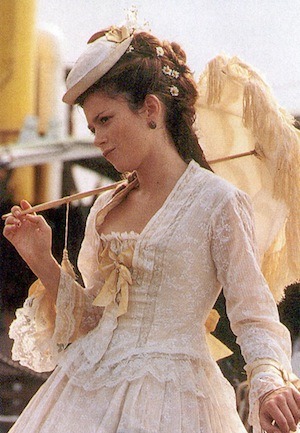
My opinion of "OUR MUTUAL FRIEND" may have improved over the years, but I still have a few issues with it. One of those issues remained John Harmon's deception regarding his identity - namely how it affected Bella Wilfer. I still find it problematic that John did not reveal his true identity to her, until a few months after their wedding. And I found Bella's lack of hostility toward his revelation implausible. Although I found Silas Wegg's attempt to blackmail Mr. Boffin interesting, I found his constant complaints about his target and plotting with Mr. Venus rather irritating after two episodes or so.
The performances featured in the 1998 miniseries more than satisfied me. I found Harmon's gradual love for Bella very interesting to watch, thanks to Steven Mackintosh's subtle performance. And Anna Friel did a great job in developing Bella Wilfur from a materialistic and ambitious young woman, to one for whom love and morality meant more to her than material wealth. "OUR MUTUAL FRIEND" also featured excellent performances from Peter Vaughn and Pam Ferris as the Boffins, Kenneth Cranham as Silas Wegg, Margaret Tyzack as the imperious Tippins, and Dominic Mafham as Mortimer Lightwood. The miniseries also featured first-rate supporting performances from the likes of David Schofield as the no-nonsense Gaffer Hexam, Anthony Calf and Doon Mackichan as the Lammles, Paul Bailey as Charley Hexam, Peter Wight as Mr. Wilfer, Cyril Sharps as the kindly Mr. Riah, Linda Bassett as pub owner Abby Potterson, Edna Doré as the kindly, yet proud Betty Higden; and Robert Lang as the reserved and shy Mr. Tremlow, whom I believe provided one of the best moments in the series.
But there seemed to be performances that I believe stood above the others. Timothy Spall gave one of his more subtle performances as the enigmatic taxidermist Mr. Venus, who found himself drawn reluctantly in Wegg's scheming. Some have complained that Katy Murphy had been too old, as a thirty-something actress, to portray dollmaker Jenny Wren, a character in her late teen or early 20s. But the other two actresses I have seen portray Jenny were either 30 or older, so I do not understand the complaint. And Murphy did such an excellent job in conveying Jenny's emotional, yet blunt personality. I thought David Bradley did a superb job in his portrayal of the sly, yet malevolent waterman, Rogue Riderhood. Unlike other actors in the role, he did not succumb to occasional histrionics.
In my previous review of "OUR MUTUAL FRIEND", I had accused David Morrissey of engaging in histrionics in his portrayal of the violently jealous headmaster, Bradley Headstone. I had been wrong. Morrissey only did it once in a scene that featured Lizzie Hexam's rejection of his marriage proposal. Otherwise, I thought the actor gave a brilliant performance. One would think portraying the reserved Lizzie Hexam would be a walk in the park for any actress. Yet, I believe Keeley Hawes took the portrayal to another level by not only conveying Lizzie's dislike of Headstone, and her wariness toward Eugene Wrayburn's feelings for her; but also her streak of insecurity that led her to doubt her worthiness for someone like Eugene. I had earlier accuse the actress of being unable of to express Lizzie's true feelings for Eugene until the last episode. But I forgot that Hawes did convey moments of attraction toward Eugene. And in portraying a reserved character like Lizzie, she did an effective job of conveying the character's penchant for keeping such feelings closely to her chest. I have said this before and I will say it again - I believe Paul McGann gave the best performance in "OUR MUTUAL FRIEND", for his portrayal of the ambiguous Eugene Wrayburn. If one closely observe the character, he is not exactly a nice man. At least most of the time. McGann did a beautiful job in his portrayal of the indolent, yet patronizing attorney; conveying both the negative and surprisingly, the character's positive traits. And thanks to McGann's performance, one could see Eugene's struggle between his love for Lizzie and his wariness over her class.
Do I still believe "OUR MUTUAL FRIEND" was flawed? Well . . . I point out a few. As I had stated in my previous review, the 1864-65 novel is not considered among Charles Dickens' best works. But my opinion of the 1998 adaptation certainly has improved a great deal over the years. Screenwriter Sandy Welch and director Julian Farino did excellent jobs in translating Dickens' tale to the television screen. And the production not only featured first-rate work from the crew, but also superb performances from an excellent cast led by Steven Mackintosh. If I must be honest, not only has my opinion of "OUR MUTUAL FRIEND" improved over the years, I now consider it one of the best adaptations of any of Dickens' works.
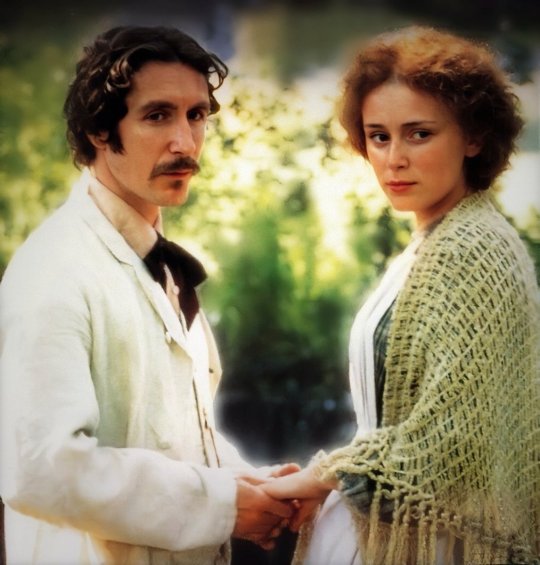
#our mutual friend#our mutual friend 1998#sandy welch#julian farino#steven mackintosh#anna friel#paul mcgann#keeley hawes#dominic mafham#peter vaughan#pam ferris#david morrissey#katy murphy#kenneth cranham#timothy spall#david bradley#paul bailey#peter wight#anthony calf#doon mackichan#linda bassett#cyril sharps#edna dore#robert lang#david schofeld#charles dickens#period drama#period dramas#costume drama
9 notes
·
View notes
Text
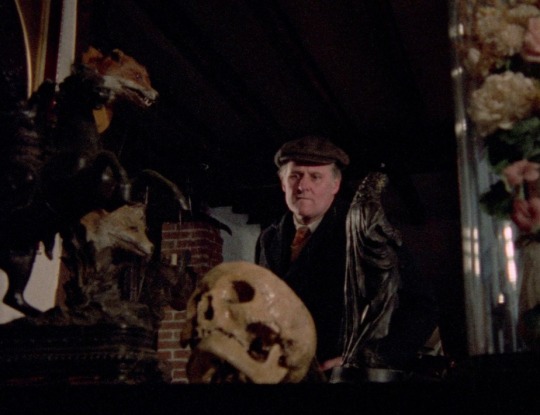
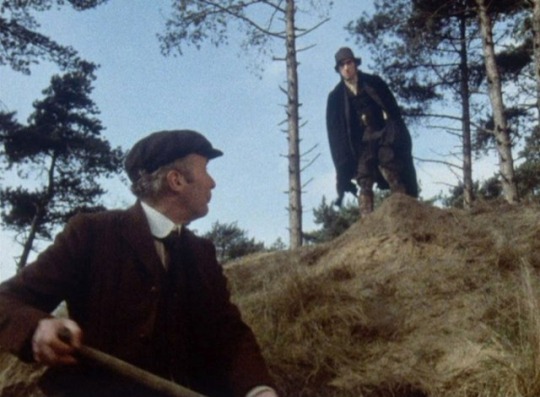

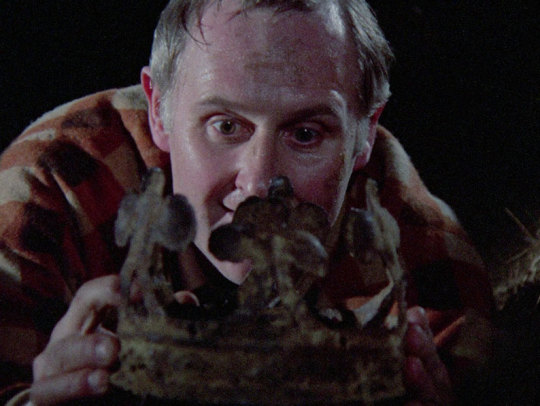


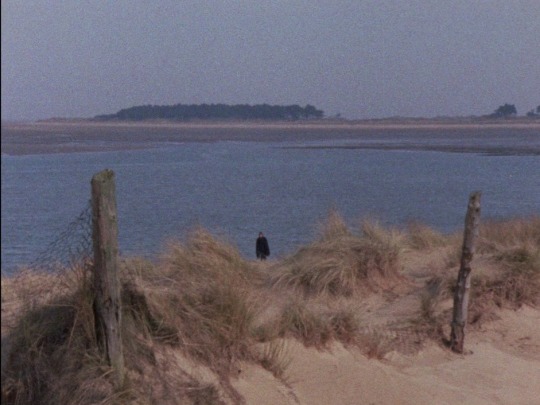
A Ghost Story for Christmas: A Warning to the Curious (BBC, 1972)
"An Anglo-Saxon crown. No one's ever discovered one before. And I found it."
"Well, you are to be congratulated, Mr. Paxton. And may I ask what you intend to do with it next?"
"I'm going to put it back."
#a warning to the curious#a ghost story for christmas#m. r. james#lawrence gordon clark#single play#horror tv#bbc#1972#peter vaughan#clive swift#john kearney#david cargill#george benson#julian herington#roger milner#gilly fraser#david pugh#cyril appleton#if you were to catch me on another day or having just watched a different entry in the cycle‚ i dare say my answer#might vary; but right now‚ for my money‚ I think this might be the moat genuinely chilling of the og series of ghost stories#a masterclass in Clark's own particular style: always preferring to show and not tell‚ there are long crucial stretches of this#play without dialogue‚ very little wasted in needless exposition or explanation. we see (or rather we almost see; as ever‚ he keeps the#real horror on the periphery‚ just a little far to see everything we both want and dread to see)#what is to be seen and we draw our own conclusions as viewers. a sterling central performance from Vaughan (and part of the real horror#here is that he truly doesn't deserve this experience; he's not a greedy or foolish or selfish man‚ just a desperate one who dearly wants#to make just one great discovery). im glad Swift was brought back as Dr Black‚ he does provide a good audience surrogate and it would#have been fun to keep him for the later films. as in all the plays‚ sound is key and is developed with just as much care and horrible#attention to detail as anything visual. there's an awful dignified but shaken nobility to Vaughan's Paxton as he realises the weight of#what he's done and the potential cost of trying to repair it. a masterpiece of the form and among the very best of the ghost stories#and still retaining some power to spook more than fifty years on; now there's quality filmmaking
13 notes
·
View notes
Text
G’eth Character Name Bank
First Names
Masculine Names
Alfred, Andrew, Arlo, Arthur, Balthazar, Barry, Ben, Benedick, Bernard, Burchard, Cedric, Charibert, Crispin, Cyrill, Daegal, Derek, Digory, Drustan, Duncan, Edmund, Edwin, Elric, Evaine, Frederick, Geffery, George, Godfreed, Gregory, Guy, Harris, Harry, Horsa, Hugh, Humphrey, Iago, Jack, Jeremy, John, Kazamir, Kenric, Lawrence, Leoric, Lorik, Luke, Lynton, Lysander, Madoc, Magnus, Maukolum, Micheal, Miles, Milhouse, Mordred, Mosseus, Ori, Orvyn, Neville, Norbert, Nycolas, Paul, Percival, Randulf, Richard, Robert, Roderick, Stephen, Tennys, Theodoric, Thomas, Tristan, Tybalt, Victor, Vincent, Vortimer, Willcock, Willian, Wymond
Feminine Names
Adelin, Alice, Amelia, Beatrix, Beryl, Bogdana, Branwyne, Brigida, Catalina, Catherine, Claudia, Crystina, Deanna, Desdemona, Elaine, Elinora, Eliza, Enide, Eva, Ferelith, Fiora, Freya, Gertrude, Gregoria, Gueanor, Gwen, Gwendolyn, Hannah, Hegelina, Helen, Helga, Heloise, Henrietta, Igraine, Imogen, Jacquelyn, Jane, Jean, Jenny, Jill, Juliana, Juliet, Katie, Leela, Lettice, Lilibet, Lilith, Lucy, Luthera, Luz, Lyra, Malyna, Margherita, Marion, Meryl, Millie, Miranda, Molle, Morgana, Morgause, Nezetta, Nina, Novella, Olwen, Oriana, Oriolda, Osanna, Pamela, Petra, Philippa, Revna, Rohez, Rosalind, Rose, Sallie, Sarra, Serphina, Sif, Simona, Sophie, Thomasine, Tiffany, Ursula, Viola, Winifred, Yrsa, Ysabella, Yvaine, Zelda, Zillah
Gender-Neutral/Unisex Names
Adrian, Alex, Aiden, Arden, Ariel, Auden, Avery, Bailey, Blaire, Blake, Brett, Breslin, Caelan, Cadain, Cameron, Charlie, Dagon, Dana, Darby, Darra, Devon, Drew, Dylan, Evan, Felize, Fenix, Fernley, Finley, Glenn, Gavyn, Haskell, Hayden, Hunter, Jace, Jaime, Jesse, Jo, Kai, Kane, Karter, Kieran, Kylin, Landon, Leslie, Mallory, Marin, Meritt, Morgan, Nell, Noel, Oakley, Otzar, Paris, Peregrine, Quant, Quyn, Reagan, Remy, Robin, Rowan, Ryan, Sam, Samar, Sasha, Sloan, Stace, Tatum, Teegan, Terrin, Urbain, Vahn, Valo, Vick, Wallace, Waverly, Whitney, Yardley, Yarden, Zasha
Surnames
Surnames, Patrilineal - First Name (Patrilineal Surname)
Ace, Allaire, Appel, Arrow, Baker, Bamford, Barnard, Beckett, Berryann, Blakewood, Blanning, Bigge, Binns, Bisby, Brewer, Brickenden, Brooker, Browne, Buller, Carey, Carpenter, Carter, Cheeseman, Clarke, Cooper, Ead, Elwood, Emory, Farmer, Fish, Fisher, Fitzroy, Fletcher, Foreman, Foster, Fuller, Galahad, Gerard, Graves, Grover, Harlow, Hawkins, Hayward, Hill, Holley, Holt, Hunter, Jester, Kerr, Kirk, Leigh, MacGuffin, Maddock, Mason, Maynard, Mercer, Miller, Nash, Paige, Payne, Pernelle, Raleigh, Ryder, Scroggs, Seller, Shepard, Shore, Slater, Smith, Tanner, Taylor, Thatcher, Thorn, Tilly, Turner, Underwood, Vaughan, Walter, Webb, Wilde, Wood, Wren, Wyatt, Wynne
Surnames, Townships in G’eth - First Name of (Location)
Abelforth, Argent Keep, Barrow Springs, Barrowmere, Bedford, Brunhelm, Bumble, Casterfalls, Dunbridge, Falmore Forest, Folk’s Bounty, Frostmaid, Fulstad, Heller’s Crossing, Hertfordshire, Humberdale, Inkwater, Little Avery, Marrowton, Mistfall, Mistmire, Morcow, Necropolis-on-Sea, Otherway, Parsendale, Piddlehinton, Port Fairwind, Redcastle, Ransom, Rutherglen, Saint Crois, Tanner’s Folly, Tavern’s Point, Wilmington
Surnames, Geographical Locations in G’eth - First Name of the (Location)
Cove of Calamity, Deep Woods of Falmore, Eastern Isles, Eastern Mountains, Foothills, Frozen Peak, Lakes, Maegor Cobblestones, Northern Mountains, Southern Isle, Tangle, West Coast, Wild Wild Woods, Woods of Angarad
Surnames, Nickname - First Name the (Something)
Bald, Bastard, Bear, Bearded, Big, Bird, Bold, Brave, Broken, Butcher, Bruiser, Careless, Caring, Charitable, Clever, Clumsy, Cold, Confessor, Coward, Crow, Cyclops, Devious, Devoted, Dog, Dragonheart, Dreamer, Elder, Faithful, Fearless, Fey, Fool, Friend, Generous, Giant, Goldheart, Goldfang, Gouty, Gracious, Great, Hag, Handsome, Hawk, Honest, Huge, Humble, Hungry, Hunter, Innocent, Ironfist, Ironside, Keeper, Kind, Lesser, Liar, Lionheart, Little, Loyal, Magical, Mercenary, Merchant, Messenger, Old, Orphan, Pale, Polite, Poet, Poor, Prodigy, Prophet, Proud, Reliable, Romantic, Rude, Selfish, Sellsword, Scab, Scholar, Shield, Shy, Singer, Sirrah, Slayer, Slug, Small, Stoneheart, Swift, Tadde, Talented, Tart, Tenacious, Timid, Tiny, Tough, Traveller, Trusted, Truthful, Viper, Wizard, Wolf, Wyrm
115 notes
·
View notes
Text
Molly on the shore and spoon river and green bushes are like siblings. To me.
#grainger#percy grainger#Molly on the shore#spoon river#Green bushes#i should get a tag for when I'm talking about my British composer besties#British blorbos#There we go#that's Grainger Holst Vaughan Williams Cyril Scott etc you get the gist
3 notes
·
View notes
Photo
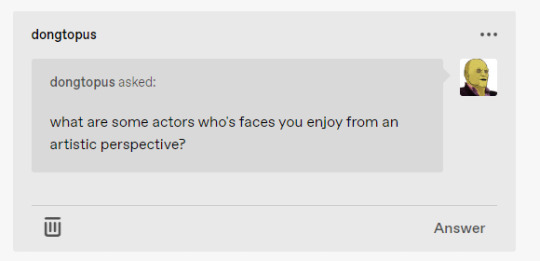

@dongtopus Oh boy oh boy, fasten your seat belt sir!
I’ll just go with the second question first and say: YES! This happens to me all the time! I distinctly remember this one time many years ago that really irked me. I was watching Barry Lyndon and this guy played by Patrick Magee suddenly appears:
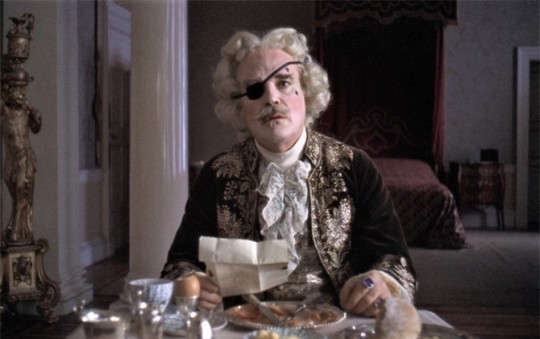
Basically the only difference was the placement of the beauty spots. I shook my fist at Kubrick, I was in awe at first but then so pissed for a while that he beat me to it lmao.
Back to the first question, here’s the the first neat faces that popped into my head:
Max von Sydow

Basil Rathbone, I want his smug bastard energy
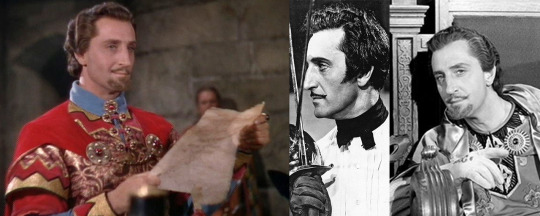
Speaking of bastard energy, Siân Phillips and Glenn Close


Our man Ian Mckellen
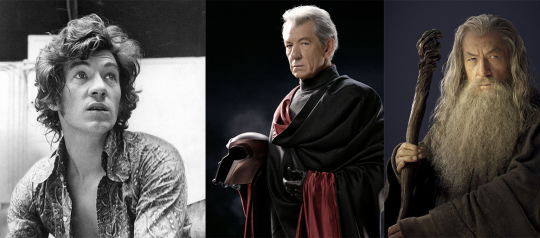
Gael García Bernal put a spell on me and I’ve never been the same since
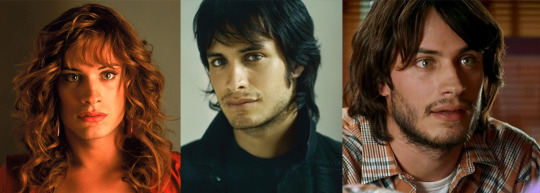
Javier Bardem (that profile one!)

Jeremy Brett
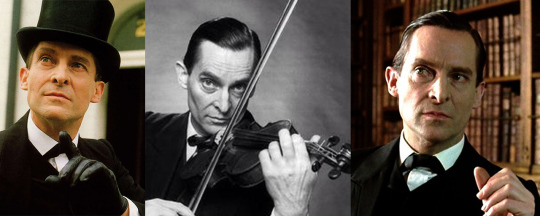
These three...Omar Sy, Olivia Colman and Toni Servillo... their faces in general, but the million dollar smile just, arghh I want to capture that



“poor lil meow meows” category: Zbigniew Zamachowski and Anatoliy Solonitsyn


Juliette Binoche
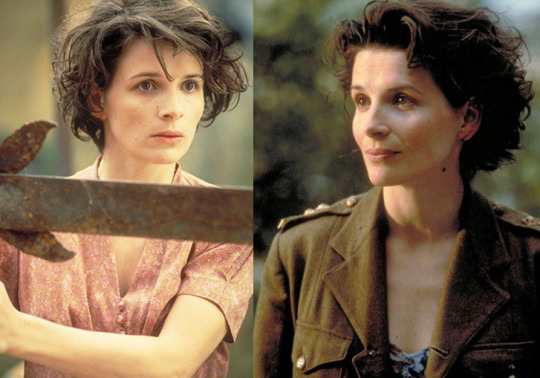
Charles Dance
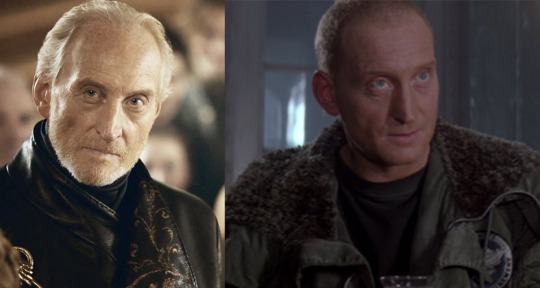
Roger Hammond, Geoffrey Palmer, Cyril Shaps in The Madness of King George (1994)
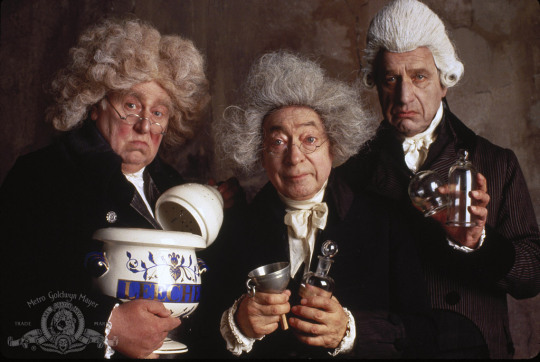
John Hurt and Richard Harris, the last two are of them in The Field (1990)
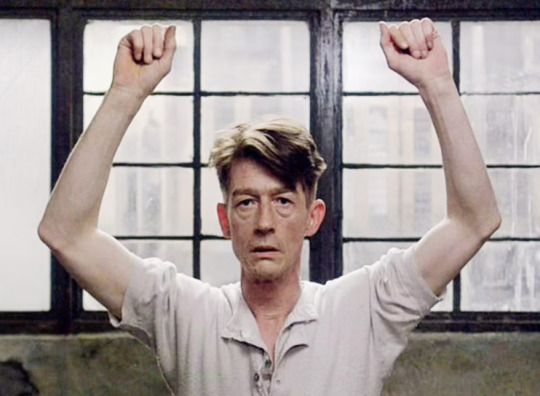

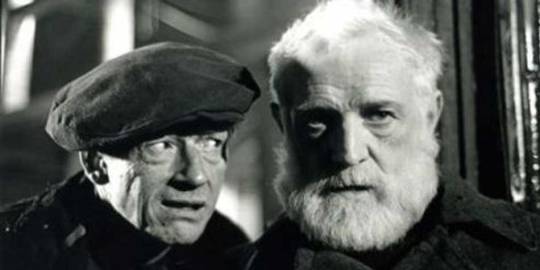
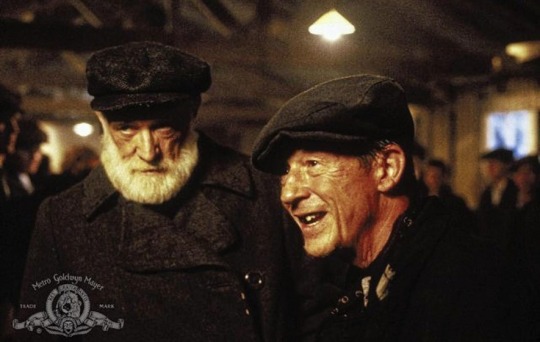
Philippe noiret and Massimo Troisi, love their contrast in Il Postino (1994) on the last pic



Willem Dafoe

Jonathan Pryce
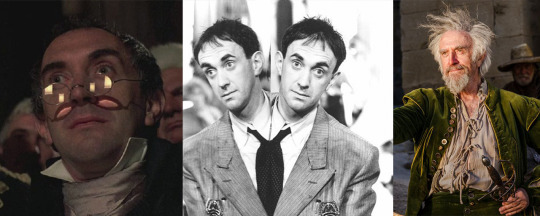
Rachel Weisz

Peter O’Toole
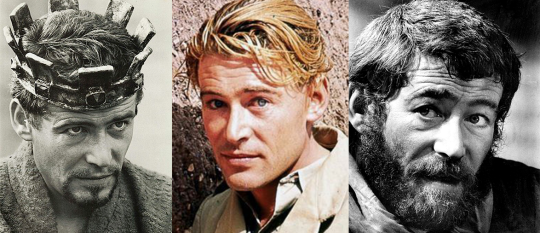
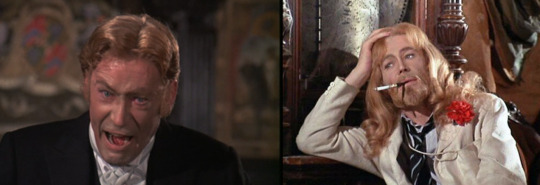
Peter Vaughan

Daniel Day-Lewis
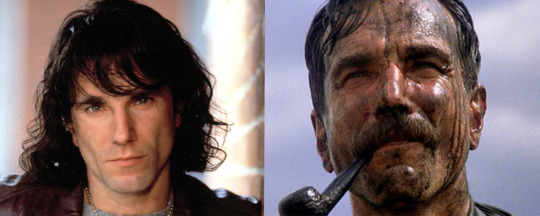
Rui Rezende, here playing a romantic well-read werewolf in a renown brazilian soap opera:

The Name of the Rose (1986), the monks there is the gift that keeps on giving for me. I have nothing but love for all the diffferent and excentric looking characters be it well known actors or lesser known,only appear for a couple of shots figures in the background

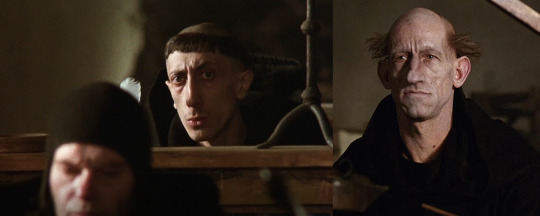

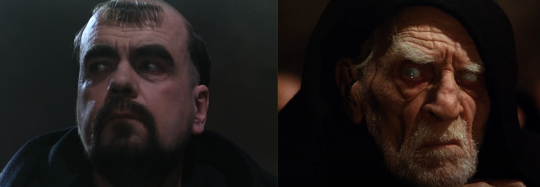

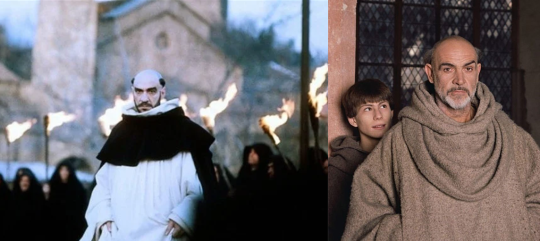
Ivan the Terrible (1944) is also a gold mine for tons great and distinct looking faces

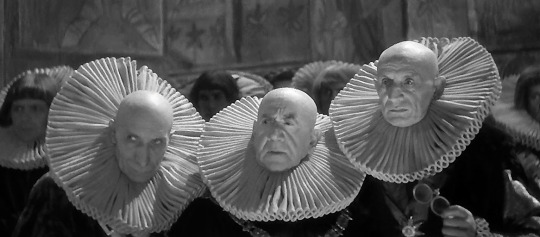

I love this fella over here he looks like a small bird of prey

Bonus: Kapellmeister Bonno from Amadeus (1984) played by Patrick Hines. He has the best facial expressions and reactions, every time... I can't take my eyes off him

#Honourable Mentions: Kyle MacLachlan and his chin#Also Twin Peaks and Coen Brothers' movies have a great selection of amazing distinct faces love them#this could've been even longer I had the contain myself#if anything now I have a lil quick library of faces easy to acess to whenever I'm looking for a certain facial feature to draw#I took printscreens because it only let me upload 10 pics and my power is not to be contained or limited#asks#replies#dongtopus
22 notes
·
View notes
Photo








Porridge - BBC One - 9/6/1974 - 3/25/1977
Sitcom (21 episodes)
Running Time: 30 minutes
Stars:
Ronnie Barker as Norman Stanley Fletcher
Fulton Mackay as Principal Officer Mr MacKay
Richard Beckinsale as Lennie Godber
Brian Wilde as Prison Officer Mr Henry Barrowclough
Peter Vaughan as "Genial" Harry Grout
Sam Kelly as "Bunny" Warren
Tony Osoba as Jim McLaren
Michael Barrington as Geoffrey Venables
Christopher Biggins as Lukewarm
Brian Glover as Cyril Heslop
John Bennett as Medical Officer
#Porridge#TV#BBC One#1970's#Sitcom#Ronnie Barker#Fulton Mackay#Richard Beckinsale#Brian Wilde#Richard Beckinsle#Brian Glover#John bennett#Michael Barrington
4 notes
·
View notes
Text
Patrick Ogilvy Carnegy (1804-1861) Penang
I am looking for descendants of Patrick Ogilvy Carnegy,First Assistant to Resident Councillor of Penang,Malaysia in 1829.He was born in 1804 Penang.His parents were James Carnegy and Mary Ogilvy.He married to Susan Imlach.He was Deputy-Lieutenant of Caernarvonshire.He died in 1861,Cefn Mine,Pwllheli,Caernarvonshire.His issue - > > i)Patrick Alexander Carnegy(1831-1902)married Catherine Chitty.Their issue - > > ai)Sir Philip Mainwaring Carnegy(1858-1927) married Jessie Pyne Rawlins. > > aii)Alice Ogilvy Carnegy (1861-1942). > > aiii)Katherine Beatrice Carnegy(1863-1884). > > aiv)Helen Mary Carnegy(1865-?)married John Maximilian Vallentin. > > > av)Alexandra Henrietta Imlach Carnegy(1870-1941)married Reverend Edward Travers Clark.He married 1stly Ethel May Clapton.Their issue:- > > bi)Frederick Le Gros Clark(1892-1977). > > bii)Cyril Drummond Le Gros Clark(1894-1945)married Averil Salmond Mackenzie-Grieve. > > bii)Wilfrid Edward Le Gros Clark(1895-1971). > > biv)Edith Elsie Le Gros Clark(1897-?). > > bv)Beatrice Henrietta Marion Clark(1907-?)married William H Drake. > > bvi)Patrick Max Travers Clark(1908-?). > > avi)Jessie Martha Carnegy(1872-1946),Devonshire. > > avii)Gerald Patrick Ogilvy Carnegy(1873-1954),Devonshire. > > aviii)Marguerite Carnegy(1877-1878). > > aix)Harold Charles Wilson Carnegy(1879-1881). > > ax)Susanna Iris Carnegy(1882). > > > ii)Mary Henrietta Imlach Carnegy(1829-1908),Gloucestershire. > > iii)Henry Ogilvy Carnegy(1833-1864)married Mary Carruthers.His issue:- > > ai)Henry Carruthers Ogilvy Carnegy(1863-1864). > > aii)Bertha Susan Carnegy(1865-1947)married Andrew Carnegie.Their issue:- > > bi)Nancy Campbell Sherlock Carnegie(1900-1994),Greenwich, Fairfield, Connecticut,United States.She married James Stillman Rockefeller.Their issue:- > > ci)James Stillman Rockefeller(Jr.)(1926-?)married 1st Liv Coucheron (Torp) Heyerdahl,2ndly Margaret Sharp Vaughan & 3rdly Marilyn Moss.His issue:- > > di)James Stillman Bennett [adopted](1955-?). > > dii)Liv Merlin Rockefeller born in 1957.She married Peter Hessler. > > diii)Ola Stillman Rockefeller(1959-?). > > cii)Sherlock Carnegie Rockefeller(1927-?)married 1stly Barclay McFadden & 2ndly Daniel Copp. > > ciii)Andrew Carnegie Rockefeller(1929-?)married 1stly Jean Victoria MacKay & 2ndly Harriet (Gruner) Ross. > > civ)Georgia Stillman Rockefeller(1937-?)married J. Harden Rose. > > bii)Lucy C Carnegie(1905-?). > > aiii)Henrietta Imlach Carnegy(1866-1908),Cheltenham. > > aiv)John Carruthers Carnegy(1871-?). > > iv)James Anderson Ogilvy Carnegy(1836-1899),The Belchamps,Abergavenny.He married Mary Ellen Pemberton Dawson.His issue - > > ai)Mary Emmaline Carnegy(1865-?). > > aii)Richard Lloyd Carnegy(1867-1915),The Cleave Hs.,Belstone,Devon.He married Margery.His issue - > > bi)Katharine Ogilvy Carnegy(1907-1999),Wiltshire married to Richard Cox Bartlett.Their issue:- > > ci)William Ogilvy Bartlett > > cii)Charles Ogilvy Bartlett married Eleanor ?..His issue:- > > di)Georgina Bartlett married Mark Peters. > > bii)Elizabeth Ogilvy Carnegy(1915-?) married Douglas Mortimer Lewes Neame.Their issue:- > > ci)Judith E. Neame born in 1938.She married ? Toyg. > > cii)Simon Douglas Richard Neame born in 1940. > > ciii)Rosemary Neame born in 1945.She married Tadeusz A. Kopanski. > > biii)Mary Rosalind Carnegy(1905-1999) Surrey,married Alexander William Kimberley Potts.Their issue:- > > ci)Caroline M Carnegy-Potts(1936-?)married William R. Horne. > > > biv)Margery Joyce Carnegy(1908-?)married Richard Maurice Hull Lewis.Their issue:- > > ci)Richard T Hull Lewis(1928-?). > > aiii)Flora Ogilvy Carnegy(1869-1963). > > av)Edith Maud Carnegy(1871-1909). > > avi)James Basil Ogilvy Carnegy(1875-1952)married Edith Eliza Middleton.His issue:- > > bi)James Malcolm Ogilvy Carnegy(1904-1911). > > bii)Gwendoline Edith Ogilvy Carnegy(1908-?)married Stewart W Aldhouse. > > biii)Patrick Henry Ogilvy Carnegy(1915-2005),Devonshire married ? Page. > > avii)Agnes Ogilvy Carnegy(1877-1970),Devonshire. > > aviii)Constance Eva Carnegy(1878-1961)married William Brabazon Hallowes.Their issue:- > > bi)Frederick Carnegy Hallowes(1910-1981)married Diana Barbara Marriott.His issue:- > > ci)Juliette Hallowes born in 1946.She married Volker Mallison. > > cii)Rupert Richard Marriott Hallowes born in 1949.He married Penelope Jane King. > > v)George Carnegy(1841). > > vi)Adelaide Carnegy(1841). > > > P/s contact me at - [email protected]
0 notes
Photo



EL MISTERIO DE OAK ISLAND…
Oak island…6 murieron de 7 antes que se revele la verdad y su contenido…
El misterio de esta isla canadiense con construcciones extrañas y su llamado pozo del dinero que ha desatado obsesiones por desentrañarlo y encierra respuestas que podrian cambiar nuestra vision de la historia…
La isla de Oak ( isla del roble ) , es una pequeña isla en el Condado de Lunenbur litoral sur de Nueva Escocia, frente a las costas atlánticas de Canadá . Es una de las casi 360 pequeñas islas de la Bahía de Mahone con una altura máxima de 11 metros sobre el nivel del mar .
La leyenda del tesoro de la Isla de Oak, enterrado en el llamado pozo del dinero, ha hecho que esta isla de forma irregular no pase de largo por la historia, pues se cree que hay enterrado un tesoro de incalculable valor .
Las diversas excavaciones realizadas , el enorme laberinto de túneles encontrado ( aún no se sabe con certeza cuando fueron construidos ni porqué ) , las cantidades astronómicas invertidas durante mas de 200 años , o las 6 muertes producidas intentando encontrarlo han contribuido a aumentar el interés por la leyenda en cada nuevo intento , convirtiendo al pozo del dinero ( money pit ) en uno de los mayores misterios del mundo .
Entre las teorías que se han expuesto sobre sus constructores se habla de los fenicios, los cartagineses, los vikingos, los templarios, y por supuesto, los piratas. Una extraña piedra encontrada en el pozo en 1804, dice, en mensaje codificado, “catorce pies debajo están enterradas dos millones de libras . La historia comienza en 1795 alguien llamado Daniel McGinnis, llegó a la isla de Oak ,( vocablo que significa “roble”), un árbol que abunda en la isla . Fue precisamente en un roble, en donde McGinnis encontró unos aparejos de barco , una polea , que pendía de una de sus ramas, y debajo, una hendidura en forma de circulo. Creyendo que se trataba de un antiguo tesoro de piratas fue en busca de un equipo y algunos hombres para emprender la excavación en aquel lugar.
Junto con 2 compañeros , remaron a través de la bahía desde tierra firme en Canadá ,y comenzaron a cavar . A los 60 centímetros encontraron una capa de piedras lisas, cortadas a propósito y de un tipo de piedra que no se encontraba en la isla , capas de piedras semejantes a las del pavimento . A unos tres metros de profundidad, hallaron una plataforma de troncos incrustados en las paredes de un pozo. A unos 6 metros de profundidad, encontraron otra plataforma de igual forma, pero no pudieron llegar más allá. Como nadie daba demasiado crédito a su aventura, sin el apoyo de otras personas no les fue posible encontrar nada y finalmente decidieron abandonar la búsqueda del tesoro agotados de cavar la dura tierra ( habían llegado hasta los 10 metros de profundidad ).
Por aquellos años, esta historia cayó en el olvido al igual que sus protagonistas. Sin embargo , en 1804 , un acaudalado hombre de negocios de la ciudad de Onslow, Simeón Lynds organizó una nueva expedición para seguir con la excavación. A medida que descendían en las profundidades de aquel pozo, encontraban más plataformas de roble, colocadas a 3 metros de distancia, unas de otras , pero no idénticas. Algunas eran especialmente gruesas y reforzadas con fibras de coco, masilla y carbón vegetal.
A los 27 metros encontraron una losa de pórfido, material prácticamente inencontrable no sólo en la isla del roble sino en toda Norteamérica. Y en la losa una inscripción en un alfabeto desconocido para todos los miembros de la expedición. En este punto hay varias hipótesis. Algunos expertos quisieron traducirlo en una frase un tanto pueril y absurda, basándose en un código de cifras sencillo, que diría: “14 pies abajo 2,000,000 de libras están sepultadas”. Pero otros, como el profesor Barry Fell, un experto en lenguas antiguas, llegó a la conclusión de que se trataba de un dialecto copto mediterráneo, cuyo significado sería religioso. A esta piedra se la llamó la piedra clave , fue vista hasta principios del siglo XX . No hay fotos ni dibujos de dicha piedra antes de su desaparición … En 1.849, los dos muchachos que ayudaron a Daniel McGinnis, colaboraron con la Sociedad Truro para resolver al fin el misterio de esta Isla. El encargado de dirigir toda la operación se llamaba Joham B. McCully y fue él quien descubrió el porqué el agua subía sin control por el pozo y cómo dirigirla hacia otro lado. Ahora bien, poco le duró el invento, pues el dique se vino abajo con el continuo empuje de las mareas altas. Una vez más el guardián del tesoro parecía hacer de las suyas y cumplir bien con su cometido. Ahora bien, esta expedición sí que logró encontrar una posible cámara en la que estaría guardado el tesoro, lo que no llegaron a acceder a ella. En el año 1861 se volvió a intentar, pero tampoco esta vez una forma de evitar que el agua y el barro lo destrozara todo impidiendo el paso.
Diversas son las teorías que se han lanzado sobre el origen de este pozo. Se habla de los Caballeros Templarios, se comenta que si Sir Francis Drake o que si el Capitán Kidd, incluso se dice que pueden ser las joyas de la Corona Francesa que desaparecieron en 1791, pero lo cierto es que aún no ha podido ni confirmarse ninguna de ellas, ni encontrar el supuesto tesoro que esconde. Hoy en día es propiedad privada y sus actuales dueños siguen buscando el tesoro…
También, poco a poco, fueron dándose casos de apariciones extrañas rondando el pozo, así como sombras. Muchos incluso decían haber visto a soldados ingleses del siglo XVIII rondando por los alrededores de las excavaciones.
Los últimos restos encontrados datan de 1897 cuando se encontraron restos de pergamino y en 1967-1969 cuando fueron descubiertas maderas del siglo XVI y un pedazo de latón antiguo. Con los avances tecnológicos alcanzados por el hombre, parecía que la solución del misterio iba a tener una rápida solución. En 1972 con los avances de una cámara submarina, se logra captar lo que serían un par de cofres, una estructura laberíntica y lo que, a ojos de los investigadores, pudiera ser un cadáver. Pero poco más se ha sabido de este pozo y lo que hay en sus entrañas. A día de hoy se sabe que es imposible controlar las inundaciones y todo un misterio como llegar al final del pozo.
CRONOLOGIA
1795: Daniel McGinnis encuentra el pozo del dinero. McGinnis, John Smith, y Anthony Vaughan cavan 30 pies de profundidad en la tierra temporalmente.
1803: La Onslow Company junto con los 3 buscadores originales comienzan la excavación. Consiguen cavar 90 pies, pero esta excavación se inundó debido a conductos y túneles que comunicaban con el océano.
1804: La excavación paralela que realizó la Onslow Company a 110 pies, también fue inundada al querer acceder al túnel principal donde se encontraba el tesoro.
1849: La Truro Company comienza a cavar. Perforan mediante 2 barriles llenos de “loose metal”. Además recuperaron 3 conexiones hacia el túnel principal hacia el tesoro.
1850: Canal subterráneo y playa artifical donde encontraron en la cala de Smith.
1861: La Isla del Roble se cobra la primera vida humana. Una caldera que estalló mató a un hombre.
1861: El fondo se hundió debido al conectar con tres túneles que se cruzaban entre sí a una profundidad de 100 pies.
1893: Fred Blair y la Oak Island Treasure Company comienzan sus investigaciones. Investigaron el túnel del derrumbamiento.
1897: La formación de rocas en triángulo fue descubierta.
1897: El cemento y el pergamino encontrados fueron descubiertos durante la perforación.
1897: La isla se cobró la segunda vida cuando Maynard Kaiser bajó por el túnel.
1899: El segundo túnel inundado, el túnel del sur de la orilla, fue descubierto.
1936: Fue encontrada la segunda piedra con inscripciones y se descubrieron más evidencias sobre el tesoro.
1965: En un día la Isla del Roble volvió a cobrarse la vida de cuatro hombres: Bob y Bobbie Restall, Karl Grasser, y Cyril Hiltz … Y desde entonces son muchos los que han intentado encontrar el supuesto tesoro, o por lo menos descubrir cual es el misterio que se oculta bajo tantos metros de tierra, piedra y madera. Nada se sabe aún al respecto. Sigue asombrando al mundo cómo alguien hace más de 200 años pudo construir un pozo que ha sido capaz de resistir todo tipo de excavaciones e investigaciones sin llegar a desvelar el misterio que esconde. Expediciones posteriores, como la que llevó consigo Simeon Lynds, descubrieron más tablas de madera cada 3 metros y planchas de fibra de coco. Pero la gran sorpresa se produjo cuando alcanzaron entre los 27 y los 30 metros de profundidad, donde una losa fabricada en pórfido, material que utilizaban desde tiempos inmemoriales civilizaciones como la egipcia o la romana. Esta losa, en cuya superficie podían verse caracteres extraños, les paró el paso. Según cuentan, (esta tabla se perdió hace ya mucho tiempo), lo que ponía podía traducirse como: “40 pies más abajo hay enterrados 2 millones de libras“. Pero ocurrió que por debajo de esta losa el agua comenzó a fluir y, aunque intentaron achicarla, nada pudieron hacer teniendo que abandonar finalmente la excavación.
Años más tarde, en 1.849, los dos muchachos que ayudaron a Daniel McGinnis, colaboraron con la Sociedad Truro para resolver al fin el misterio de esta Isla. El encargado de dirigir toda la operación se llamaba Joham B. McCully y fue él quien descubrió el porqué el agua subía sin control por el pozo y cómo dirigirla hacia otro lado. Ahora bien, poco le duró el invento, pues el dique se vino abajo con el continuo empuje de las mareas altas. Una vez más el guardián del tesoro parecía hacer de las suyas y cumplir bien con su cometido. Ahora bien, esta expedición sí que logró encontrar una posible cámara en la que estaría guardado el tesoro, lo que no llegaron a acceder a ella. En el año 1861 se volvió a intentar, pero tampoco esta vez una forma de evitar que el agua y el barro lo destrozara todo impidiendo el paso. Diversas son las teorías que se han lanzado sobre el origen de este pozo. Se habla de los Caballeros Templarios, se comenta que si Sir Francis Drake o que si el Capitán Kidd, incluso se dice que pueden ser las joyas de la Corona Francesa que desaparecieron en 1791, pero lo cierto es que aún no ha podido ni confirmarse ninguna de ellas, ni encontrar el supuesto tesoro que esconde. Hoy en día es propiedad privada y sus actuales dueños siguen buscando el tesoro… … ALGUNAS CONCLUSIONES NUESTRAS….
La teoria de los antiguos astronautas sugiere que fueron extraterrestres los que construyeron el pozo-trampa ya que no habria sido posible para los humanos antiguos debido a los conocimientos de arquitectura e hidraulica quee se requieren para la construccion del mismo y la maquinaria necesaria. esto es apoyado por el hecho de que incluso en nuestra epoca todavia no pueden acceder al fondo del pozo en el que segn la teoria se encontraria el arca de la alianza conteniendo un reactor nuclear alienigena…
En esta parte, en esta isla o en Canadá, no existen cocoteros, pero sin en cambio, las tapas estaban cubiertas por capas de piel de coco, además de una arcilla que solo se utilizó en época de los egipcios y romanos, supuestamente cuando América aún no había sido colonizada.
Además, no son ríos subterráneos, son entradas desde el mar para llevar el agua hasta el pozo, como una especie de trampa, son túneles hechos por alguien, eso es lo raro. Además, quien se daría el lujo de cavar un túnel así con materiales que no existen en ese lugar, que no son de esa época, solo para tapar un río subterráneo en una isla que nadie habita? con que fin? Piénsenlo un poco, aquí hay algo más.
EN ESE LUGAR ESCONDIERON ALGO MAS QUE UN TESORO QUE ACTUABA COMO UNA CAJA FUERTE E IMPENETRABLE , PERO PARA GUARDAR QUE? SE DICE QUE HUYENDO DE FRANCIA LO QUE TRAJERON FUE EL ARCA DE LA ALIANZA QUE EN SU INTERIOR CONTENÍA ALGO MAS QUE LAS TABLAS CON LOS 10 MANDAMIENTOS ALGO CON MAYOR PODER ALGO QUE CAUSABA ALGO MUY PARTICULAR EN QUIENES LA HABIAN TRANSPORTADO SI ERA ASI SI SOLO ERAN UN PAR DE TABLAS PORQUE LOS QUE LA TRANSPORTABAN ERAN RELEVADOS DE SU PUESTO CADA TRES SEMANAS YA QUE DE NO SER ASI ESTOS PRESENTABAN PORBLEMAS DE SALUD COMO LLAGAS EN LA PIEL PERDIDA DE CABELLO Y SUS MANOS SE TORNABAN NEGRAS Y DESPUES MORÍAN Y EL QUE CONSTRUYO ESTA BOBEDA OBTUVO LOS PLANOS DE ALGUIEN MUY INTELIGENTE DEMASIADO DIRIA YO PARA SER UN HUMANO NORMAL JAJAJA PERO EN FIN ESTUDIOS ECHOS DEMUESTRAN QUE EN EL INTERIOR SE ENCONTRARON ALTOS NIVELES DE RADIAS ION DEMACIADOS COMO PARA QUE UN SER HUMANO NO SUFRIERA ALGÚN DAÑO FÍSICO A CORTO PLAZO ….
Concuerda con los efectos de los que se acercaban al arca y era transportado con varas y una estructura y tapado y los guardias eran relevados periodicamente…negar que se conocia la energia atomica es imposible tras ver la descripcion de la destruccion de Sodoma y Gomorra y la descripcion de los angeles con trajes antiradiacion brillantes,la descripcion de la mujer convertida en estatua ,igual a la filmacion de cuerpos desmenuzandose en Hiroshima….
TAMBIEN HALLARON EN LA ISLA SIMBOLOS Y UNA PLACA CON UNA ESCRITURA CON SIMBOLOS INDESCIFRABLE…DICEN QUE ES UN MAPA DE UN TESORO PERO LA VERDAD QUE ESOS SIMBOLOS SON IGUALES A LOS HALLADOS EN PAREDES DE CAVERNAS EN TASSILI,AFRICA,MUROS CON PINTURAS RUPESTRES QUE MUESTRAN CLARAMENTE A EXTRATERRESTRES O DIOSES,CON TRAJES ESPACIALES Y SUS NAVES Y ARREANDO HUMANOS COMO SE HACE CON UN GANADO… ESTOS DIOSES USAN UNAS ESCAFANDRAS MUY ESPECIALES….TRANSPARENTES E IGUALES A LAS QUE LA NASA USO PARA PROBAR SUS TRAJES BAJO EL AGUA…
EN TASSILI SE HAN HALLADO OBJETOS Y HERRAMIENTAS Y ANILLOS DE PLATINO CON EXTRAÑOS SIMBOLOS…
ESE LENGUAJE SIMILAR A SIMBOLOS ALQUIMICOS Y ALFABETOS MASONICOS ANTIGUOS ES EN REALIDAD PROTO-BEREBERE EL IDIOMA ANTIGUO HABLADO CUANDO EL DESIERTO DEL SAHARA ERA UN MAR Y UN VERGEL.
Y LAS LEYENDAS DE LA ATLANTIDA AFRICANA DE LA REINA BLANCA DE LOS BEREBERES EN SU SARCOFAGO DE METAL Y ASISTIDA POR DJINNS O GENIOS….PUES ESA REINA BLANCA DE ELEVADA ESTATURA EXISTIO Y DIO LUGAR A LOS RELATOS DE RIDEN HAGARD Y SUS NOVELAS DE LA DIOSA DE FUEGO ATLANTE…
EN 1972 INTRODUJERON UNA SONDA CON UNA CAMARA Y VIERON QUE HABIA UN COFRE Y UN SARCOFAGO Y RESTOS DE UN CUERPO HUMANO AHI,SUMERGIDOS BAJO METROS Y METROS DE AGUA LODOZA Y UNO DE LOS BUZOS TRAS VARIOS INTENTOS LOGRO CORTAR UNA ESQUIRLA DEL SARCOFAGO….MATERIAL DE PLATINO….
EN EL MISTERIO DE LA CIUDAD SUMERGIDA DE NAM MADOL HALLARON MISTERIOSAS CONSTRUCCIONES Y RUINAS Y OBSERVARON A LO LEJOS SARCOFAGOS DE PLATINO….
EN RELATOS DEL TIBET HABLAN DE QUE DIOSES O VISITANTES DE LAS ESTRELLAS AUN PERMANECEN EN SARCOFAGOS DE PLATINO LUMINOSOS EN CUEVAS SUBTERRANEAS Y SE LOS CONOCE COMO LOS ANCESTROS O ANTIGUOS…
EN LA CRONICA DE AKAKOR CUENTAN SOBRE LA CIVILIZACION ALIEN QUE FUE LA MADRE DE LAS CULTURAS AMERICANAS Y CUENTA QUE EN EL AMAZONAS HAY VARIAS CIUDADES SUBTERRANEAS CON ILUMINACION ETERNA Y EN ELLAS HABRIA CAMARAS CON SARCOFAGOS METALICOS DE LOS PADRES DE LAS ESTRELLAS…
RELIQUIAS DE ESA CIUDAD HALLO EL INVESTIGADOR FAWCETT….CONSIGUIO JARRON Y AMULETOS Y ESCULTURA DE DIOSA ATLANTE Y LOGRO VER LAS LUCES NEBLINOSAS ETERNAS DE LEJOS….VOLVIO A BUSCARLAS Y NUNCA MAD REGRESO Y SU RASTRO Y RELIQUIAS FUERON OCULTADAS POR LOS MALEFICOS HOMBRES DE NEGRO QUE TAMBIEN ASESINARON EN BRASIL AL PERIODISTA ALEMAN KARL BRUGGER QUE TRABAJABA EN EL 2DO LIBRO “REGRESO A AKAKOR” Y LO HICIERON MATAR Y ROBAR SU MATERISL….AUN HACE POCO UNA SUPUESTA INVESTIGADORA ZIONISTA ESCRIBIO REPORTAJES Y SUPUESTAS REVELACIONES PARS DESACREDITAR A BRUGGER Y LAS CIUDADES AMAZONICAS SUBTERRANEAS… YA ME REFERI A ESTA INVESTIGADORA QUE ES UN TOPO DE LA CIA-MOSSAD QUE REGALA PESCADO PODRIDO PARA DESINFORMAR…
LOS SIMBOLOS EXTRAÑOS FUERON ESTUDIADOS Y USADOS POR EL PRESIDENTE ROOSEVELT Y SUS LOGIAS MASONICAS Y TOMADOS COMO TEMA SERIO Y RETOMADO POR LA LOGIA SKULL AND BONES QUE ESTUDIO LOS SIMBOLOS Y ESTA AL TANTO DE LO QUE PASA CON EL TEMA… … EXPEDICIONES RECIENTES DE HISTORY CHANNEL SE PLANTEARON Y DESCUBRIERON ALGUNAS PISTAS NOTABLES E INTERESANTES…
En la ensenada smith con marcadores artificiales bajo el agua….o.s.n.i.s ? De ahi empezo el descenso de las airships y los observadores ? Similar a ummo..
Recordemos que hacia mediados del siglo 19 se producen en Norteamerica las primeras oleadas de extrañas naves cruza de dirigibles y ovnis,rudimentarias pero que llevaban tripulacion y esa seria la primer avanzada de visitantes integrandose a nuestra cultura subrepticiamente para estudiarnos…. Nunca se se supo la base de operaciones y descenso de estas visitas y la posicion de la ISLA OAK es estrategica y ha tenido historia de oleadas de ovnis y osnis…
LA FAMILIA SINCLAIR , TEMPLARIA…TRAJO RELIQUIAS A AMERICA ?
Henry sinclair en 1303 se hizo lider de templarios y llego a Oak island y planto robles para marcar galeria de tuneles de roble para esconder material y tesoros de los templarios en Oak island …usaban material magnetizado…
Huesos humanos en el foso 10x en los 70 con videos,herramientas y cofres….
El foso sin fondo descubierto en 1765.buceo en agua salada del oceano.con piedras extrañas con vegetacion y muy antiguas…
Fibras de coco apiladas encima de 5 canales de desague para el hoyo sin fin…fibra de coco igual a la usada aun hoy en tierra santa…
Y lograron hallar la fibra de coco…aun…cuando baja la marea se hallan esos restos…..la extraccion debe ser rapida antes del regreso de la subida de la marea …
Viernes 13 de 1307 los templarios son emboscados para sacarle riquezas y reliquias… El tesoro y reliquias templarios 14 barcos zarparon de larrochelle para venir a america… O un barco español para ocultar tesoro y fingir hundimiento. . Las muestras de ensenada smith para fibra de coco…la fibra resiste siglos…los conocedores de quimica saben de su baja descomposicion y resistencia…
Y la universidad de arcadia confirmo que era fibra de coco…de 1400…
Se dice que es una formacion natural..ja…hay restos de investigaciones y referencias masonicas…el mismo presidente roosevelt participo de la busqueda en su juventud y toda la vida se involucro en el tema,empresas serias de geologos y perforaciones han investigado la isla y no han podido penetrar en el pozo ni entender como se realizo el sistema… Se deduce que solo gente con conocimientos de ingenieria y arquitectura,como los que hicieron las catedrales y se relacionaban a masones y templarios podian realizar algo asi.
Ademas la vinculacion con la leyenda de la camara secreta masonica y los mapas templarios con los que Colon llego a America,pues el simbolo pintado en sus carabelas era LA CRUZ TEMPLARIA…
Ademas los templarios condenados trasladaron sus reliquias y material a Francia,al barrio de LE TEMPLE aun conocido asi y desde donde surge LA MASONERIA FRANCESA…
la otra rama de la masoneria ? Facil,parte del legado templario se embarca con 14 barcos a Escocia a la Familia Sinclair que organiza el nacimiento de la MASONERIA ESCOCESA y que importa el culto,reliquias y riquezas a NORTEAMERICA y por eso se explica que la mayoria de politicos como WASHINGTON,FRANKLIN,LAFAYETTE,LINCOLN y JEFFERSON sean masones y ademas lo de las 13 colonias y los simbolos masonicos en el dolar…
El tesoro enterrado seria el arca de la alianza con el griaal y las verdaderas tablas de la ley y la tora….no la que usa Israel y esta adulterada…
Y algunos creen que el sarcofago metalico sumergido seria de platino o alguna aleacion alquimista y tan importante obra de excavacion con canales y trampas guardaria el cuerpo de algun avatar o mesias …quizas muerto y conservado pero segun leyendas del 2do regreso y templarias…podria ser un mesias en estado de animacion suspendida a la espera del regreso…
TAMAÑOS MISTERIOS SE INVOLUCRAN CON LA ISLA OAK Y VOLVEREMOS SOBRE ESTO EN UNA NOTA FUTURA ..
0 notes
Text
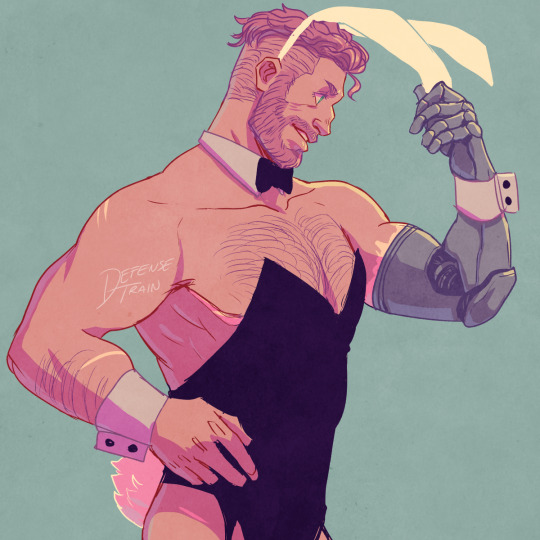

some 2021 bunny Cyrils~
#doodle#oc#cyril vaughan#i miss cyril so much i really do#i should make.... bunny mals for the heck of it too.... oh...
142 notes
·
View notes
Text
The True Story of the Aberfan Disaster
https://sciencespies.com/history/the-true-story-of-the-aberfan-disaster/
The True Story of the Aberfan Disaster

SMITHSONIANMAG.COM | Nov. 15, 2019, 3:45 p.m.
Jeff Edwards’ primary school teacher had just started the day’s math lesson when an ominous rumble sounded in the distance.
“The next thing I remember was waking up,” he later recalled. “My right foot was stuck in the radiator and there was water pouring out of it. My desk was pinned against my stomach and a girl’s head was on my left shoulder. She was dead.”
Over the next hour and a half, the then-8-year-old Edwards struggled to breathe as his classmates, trapped under a torrent of liquefied coal waste, cried out around him. With every passing minute, he said, “They got quieter and quieter, … buried and running out of air.”
Around 11 a.m., someone spotted a tuft of Edwards’ blonde hair amid the rubble. A fireman used a hatchet to free the young boy from beneath his desk, then passed him along to safety via a human chain. Edwards, the tenth child rescued that morning, would be the last survivor pulled from the debris.
In total, the October 21, 1966, disaster killed 144 people, 116 of whom were students at the Welsh town of Aberfan’s Pantglas Junior School. The tragedy, according to BBC News’ Ceri Jackson, was a “mistake that cost a village its children”; in the words of a tribunal commissioned to investigate the incident, the deadly accident “could and should have been prevented.”
The Aberfan disaster features heavily in season three of Netflix’s award-winning series “The Crown,” which returns to viewers’ screens this Sunday after a two-year absence. To ensure the television biopic portrayed the incident “truthfully and responsibly,” the cast and crew consulted survivors and current residents of Aberfan. Per a statement from the show’s producers, “All strongly felt the Aberfan disaster and the events that followed must be included, especially as it continues to hold a deep resonance for the nation and the queen herself.”

The moving mountain of coal sludge after the disaster at Aberfan when the coal tip avalanched through the Pantglas Junior School, killing 116 children and 28 adults.
(Photo by PA Images via Getty Images)
More
Much like the days that preceded it, the morning of the disaster found Aberfan, a southern Wales village home to some 8,000 coal miners and their loved ones, blanketed in a wet fog. The 240 students enrolled in the school walked to class in the rain, but few were focused on the weather. Instead, the children’s conversations centered on plans for the coming half-term holiday: Following an early afternoon assembly, all students would be dismissed for vacation.
Several years earlier, the local council had contacted the National Coal Board, which ran the nearby Merthyr Vale Colliery mine, to express concerns regarding the spoil tip—a massive pile of accumulated coal waste material removed during mining—situated just above the Pantglas school.
“I regard it as extremely serious as the slurry is so fluid and the gradient so steep that it could not possibly stay in position in the winter time or during periods of heavy rain,” one engineer wrote in a June 1963 letter.
The NCB not only ignored these complaints, but implicitly threatened the town’s livelihood. Per BBC News, the unionized mining giant made its intentions clear: “Make a fuss and the mine would close.”

Rescue workers take a break from searching following the catastrophic collapse of a colliery spoil tip in the Welsh village of Aberfan, near Merthyr Tydfil, on 21 October 1966.
(Photo by Ron Burton/Mirrorpix/Getty Images)
More
At the time of the disaster, the tip in question, number seven, rose 111 feet aboveground and contained nearly 300,000 cubic yards of waste. Set atop an underground spring covered by porous sandstone, the heap was precariously placed and, thanks to the recent rainy weather, extremely oversaturated.
At 7:30 a.m., workers assigned to the tip discovered that it had started to slide. Although the crew opted not to move forward with the day’s planned tip operation, they were unable to prevent further slippage, and at 9:15 a.m., a “glistening black avalanche” of liquefied coal waste, or slurry, began hurtling toward the village below.
“I thought I was seeing things,” crane driver Gwyn Brown later told investigators. “Then it rose up pretty fast, at a tremendous speed. … It sort of came up out of the depression and turned itself into a wave—that is the only way I can describe it—down toward the mountain.”
According to History Extra’s Steve Humphries, the 30-foot-tall “tsunami of sludge” raced down the hill at a speed of more than 80 miles per hour. Sweeping past a canal and an embankment, the landslide tore into the Pantglas Junior School, breaching the walls of four classrooms and trapping those inside in a flood of thick, quicksand-like sludge.

Inhabitants of the Welsh mining village of Aberfan attend the mass funeral for 81 of the 190 children and adults who perished when a landslide engulfed the junior school.
(Photo by George Freston/Getty Images)
More
In the immediate aftermath of the onslaught, an eerie silence settled across the area.
“Everything was so quiet,” Cyril Vaughan, a teacher at the nearby senior school, said. “[It was] as if nature had realized that a tremendous mistake had been made and nature was speechless.”
Rubble and water from burst pipes exacerbated the already dire situation. As fireman Len Haggett recounted, rescuers who arrived on the scene found rising waters threatening to engulf 10-year-old Phil Thomas, who had been caught in the sludge as he was walking to school. “The water was rising and coming up to his head,” Haggett said. “We thought he might drown.” But a group of seven firefighters managed to lift the wall that had collapsed on Thomas, and he became one of the few to successfully escape the debris.
Five students survived the disaster thanks to the quick thinking of dinner lady Nansi Williams, who sacrificed herself by shielding them from the sludge with her own body. Another staff member, teacher David Beynon, died while cradling five of his pupils. None of the students in Beynon’s class survived.
Eight-year-old Jeff Edwards, rescued from the rubble around 11 a.m., was the last person found alive. But shocked parents, miners, police officers, firefighters and volunteers continued digging long after the last child’s cry could be heard. As Alix Palmer, a reporter who arrived to survey the mayhem the following day, wrote in a letter to her mother, “Men who had started digging at 9:30 the previous morning were still digging, with shirts off and bodies sweating despite the cold.”
Charles Nunn, a detective tasked with cataloging the bodies brought to the makeshift morgue in Aberfan’s Bethania Chapel, sorted through the deceased’s pockets in search of “a handkerchief, sweets, anything that might help with identification.” Parents walked along the rows of corpses laid on pews, lifting blankets covering the bodies until they spotted a familiar face. Those whose children hadn’t yet been found repeated the ritual daily, leaving the chapel to stand in line once again, “mother relieving father, to keep their place outside waiting in the rain.”




Three children stand out from the crowds during Queen Elizabeth II’s visit to Aberfan in Wales.
(Photo by Stan Meagher/Express/Getty Images)
More
Fifteen days after the landslide, Nunn and his team finally left Aberfan. They had identified 144 bodies, including those of 116 children, 5 teachers and 23 locals whose homes were destroyed by the deluge. According to Johnson, the victims ranged in age from three months to 82; of the 116 students, most were aged 7 to 11.
Episode three of “The Crown”’s new season finds Elizabeth II, played by newly minted Oscar laureate Olivia Colman, debating how best to address the situation. England’s prime minister, Harold Wilson (Jason Watkins), urges her to visit the mining village and console its grieving residents in person, but the queen is reluctant to do so, suggesting her presence would distract from the tragedy at hand. Describing Wilson’s directive to “comfort people” as simply a “show,” she declares, “The Crown doesn’t do that.”
The real Elizabeth didn’t visit Aberfan until eight days after the disaster. Decades later, the queen reportedly deemed this decision her “biggest regret.”
Elizabeth’s time in the village—biographer Robert Lacey said her “gaunt features, etched with grief, were the more moving for being so clearly genuine”—signaled a shift in the monarchy’s long-held tradition of stoicism. As Jen Chaney writes for Vulture, the moment dramatized in “The Crown” offers “one of multiple hints that modern times are beginning to demand more transparency and outward empathy from the royal family.”




Aerial picture, taken from a plane, shows the town of Aberfan and aftermath of the slurry slide
(Photo by Ron Burton/Mirrorpix/Getty Images)
More
A tribunal tasked with investigating the Aberfan disaster published its findings on August 3, 1967. Over the course of 76 days, the panel had interviewed 136 witnesses and examined 300 exhibits. Based on this evidence, the tribunal concluded that the sole party responsible for the tragedy was the National Coal Board.
“The Aberfan disaster is a terrifying tale of bungling ineptitude by many men charged with tasks for which they were totally unfitted, of failure to heed clear warnings, and of total lack of direction from above,” the investigators wrote in their report. “Not villains but decent men, led astray by foolishness or by ignorance or by both in combination, are responsible for what happened at Aberfan.”
Per History Extra, the NCB’s chairman, Lord Robens, denied all wrongdoing. He attributed the accident to previously unknown springs located below the spoil tip and refuted testimony suggesting the tip had shown signs of slipping in the years prior to the disaster. Both of these claims were at odds with the physical evidence examined by the tribunal.
Photographs and footage of the deadly slurry avalanche generated sympathy across the globe, and in the months following the disaster, donors contributed a total of £1,750,000. (Today, this equates to around £20 million pounds, or more than $25 million USD.)
Much of this money failed to reach the villagers whose lives had been devastated by the tragedy. As BBC News reports, the commission in charge of distributing the funds allocated £150,000 toward removal of the town’s remaining tips after the NCB refused to cover the costs; meanwhile, the fund’s managers actually considered distributing compensation on the basis of how close parents had been to their deceased children. Thankfully, the commission soon moved away from this plan, instead offering bereaved parents £50 each. Later, this figure was raised to the “generous offer” of £500.

The queen and Prince Philip visiting Aberfan
(Photo by Syndication/Mirrorpix/Mirrorpix via Getty Images)
More
The psychological scars suffered by survivors endured long beyond the 1966 disaster. Edwards, the last child pulled from the razed school, told Wales Online that he relived the trauma in the “days, the weeks and the months after.”
“I was afraid of noise, I was afraid of crowds, I was afraid of going to school,” he added, “and for many years I couldn’t go to school because I was afraid that something would happen to me.”
Melvyn Walker, 8 years old at the time of the disaster, echoed Edwards’ sentiments, saying, “[The sound of children playing] gives me flashbacks. I get very anxious even to this day. If I hear children’s voices it takes me straight back.”
Speaking with ITV News’ Juliet Brenner on the 50th anniversary of the tragedy, Edwards concluded, “Most of my friends in my class died. … Basically we were happy-go-lucky children, looking forward to the half-term holidays, and at 9:15 our childhood stopped.”
Since the Aberfan disaster, the queen has returned to the tiny Welsh town three more times. Although Elizabeth was unable to attend a memorial ceremony held on the 50th anniversary of the tragedy, her son Prince Charles read a statement from his mother detailing the “heart-breaking inscription” written on a posy given to her by a young girl during the 1966 visit: “From the remaining children of Aberfan.”
“On this saddest of anniversaries,” the queen added, “I send my renewed good wishes to you all.”

The queen lays a wreath to commemorate the victims of the Aberfan disaster of 1966.
(Photo by PA Images via Getty Images)
More
#History
0 notes
Text
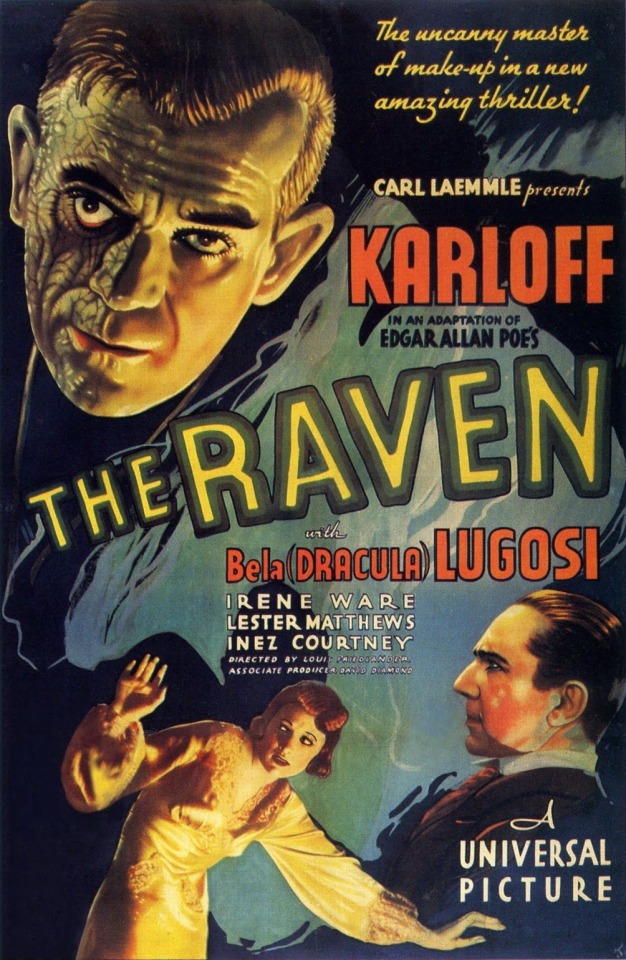



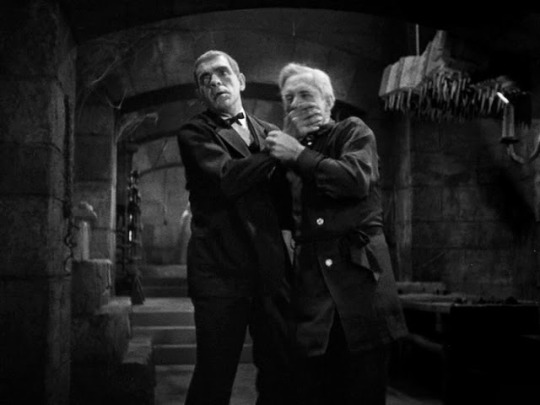
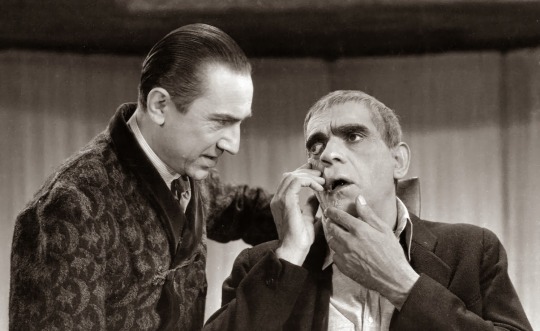

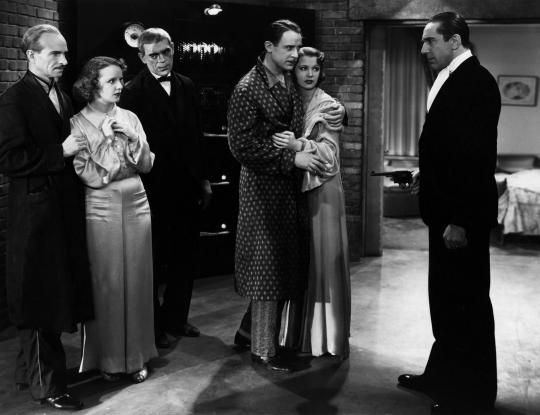
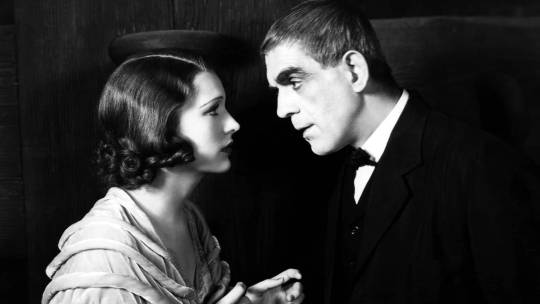
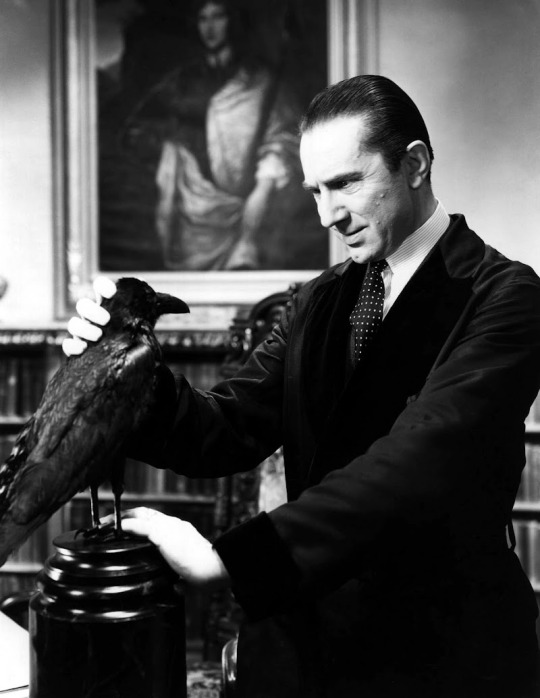
The Raven (1935)
"The raven is my talisman."
"Curious talisman. Bird of ill omen. A symbol of death."
"Death is my talisman, Mr. Chapman. The one indestructible force, the one certain thing in an uncertain universe - death."
#the raven#1935#horror film#american cinema#edgar allan poe#david boehm#guy endore#lew landers#bela lugosi#boris karloff#lester matthews#irene ware#samuel s. hinds#spencer charters#inez courtney#ian wolfe#maidel turner#arthur hoyt#cyril thornton#clifford vaughan#a wonderfully grotesque horror that marries gothic Poe tropes with the scientific nastiness that was then so in vogue#Karloff gets top billing despite the fact that Lugosi is the true lead‚ a reflection on the former's meteoric rise to stardom over the#previous few years. regardless of their place in the credits‚ both are on top form: Lugosi wonderfully intense in his obsessive hate‚#Karloff bringing complex morality as a tweaked version of his sympathetic monster role (monstrous in the eyes of the other characters and e#even himself‚ but human‚ coherent‚ natural; a variation on his contemporary monstrous appearances in the likes of The Mummy‚ The Ghoul‚#Frankenstein). his first appearance post transformation‚ in which the 'ordinary' visitors to Lugosi's home openly express their discomfort#at his presence and instruct him to stand apart‚ is deeply affecting. it makes you wonder how Karloff's own self image fared (the script#has him refer to his remarkable ugliness before Lugosi has done any of his evil doctoring). elsewhere this film features the requisite#comic scenes that this era apparently felt were essential to horror filmmaking (and which so rarely work) and a nauseating coda between the#romantic leads‚ but for the most part this is a solid golden age classic grounded by two horror masters at the height of their powers
21 notes
·
View notes
Photo
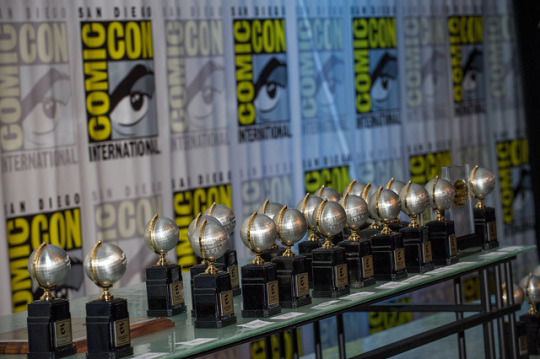
Here are the 2017 Eisner Award Winners
Named for the pioneering comics creator and graphic novelist Will Eisner, The Will Eisner Comic Industry Awards, considered the “Oscars” of the comic book industry, were given out in 31 categories for works published in 2016.
Below is the full list of the nominees and winners (highlighted in bold).
Best Short Story
“The Comics Wedding of the Century,” by Simon Hanselmann, in We Told You So: Comics as Art (Fantagraphics)
“The Dark Nothing,” by Jordan Crane, in Uptight #5 (Fantagraphics)
“Good Boy,” by Tom King & David Finch, Batman Annual #1 (DC)
“Monday,” by W. Maxwell Prince and John Amor, in One Week in the Library (Image)
“Mostly Saturn,” by Michael DeForge, in Island Magazine #8 (Image)
“Shrine of the Monkey God!” by Kim Deitch, in Kramers Ergot 9 (Fantagraphics)
Best Single Issue/One-Shot
Babybel Wax Bodysuit, by Eric Kostiuk Williams (Retrofit/Big Planet)
Beasts of Burden: What the Cat Dragged In, by Evan Dorkin, Sarah Dyer, and Jill Thompson (Dark Horse)
Blammo #9, by Noah Van Sciver (Kilgore Books)
Criminal 10th Anniversary Special, by Ed Brubaker and Sean Phillips (Image)
Sir Alfred #3, by Tim Hensley (Pigeon Press)
Your Black Friend, by Ben Passmore (Silver Sprocket)
Best Continuing Series
Astro City, by Kurt Busiek and Brent Anderson (Vertigo/DC)
Kill or Be Killed, by Ed Brubaker and Sean Phillips (Image)
The Mighty Thor, by Jason Aaron and Russell Dauterman (Marvel)
Paper Girls, by Brian K. Vaughan and Cliff Chiang (Image)
Saga, by Brian K. Vaughan and Fiona Staples (Image)
Best Limited Series
Archangel, by William Gibson, Michael St. John Smith, Butch Guice, and Tom Palmer (IDW)
Briggs Land, by Brian Wood and Mack Chater (Dark Horse)
Han Solo, by Marjorie Liu and Mark Brooks (Marvel)
Kim and Kim, by Magdalene Visaggio and Eva Cabrera (Black Mask)
The Vision, by Tom King and Gabriel Walta (Marvel)
Best New Series
Black Hammer, by Jeff Lemire and Dean Ormston (Dark Horse)
Clean Room, by Gail Simone and Jon Davis-Hunt (Vertigo/DC)
Deathstroke: Rebirth, by Christopher Priest, Carlo Pagulayan, et al. (DC)
Faith, by Jody Houser, Pere Pérez, and Marguerite Sauvage (Valiant)
Mockingbird, by Chelsea Cain and Kate Niemczyk (Marvel)
Best Publication for Early Readers (up to age 8)
Ape and Armadillo Take Over the World, by James Sturm (Toon)
Burt’s Way Home, by John Martz (Koyama)
The Creeps, Book 2: The Trolls Will Feast! by Chris Schweizer (Abrams)
I’m Grumpy (My First Comics), by Jennifer L. Holm and Matthew Holm (Random House Books for Young Readers)
Narwhal: Unicorn of the Sea, by Ben Clanton (Tundra)
Best Publication for Kids (ages 9-12)
The Drawing Lesson, by Mark Crilley (Watson-Guptill)
Ghosts, by Raina Telgemeier (Scholastic)
Hilda and the Stone Forest, by Luke Pearson (Flying Eye Books)
Rikki, adapted by Norm Harper and Matthew Foltz-Gray (Karate Petshop)
Science Comics: Dinosaurs, by MK Reed and Joe Flood (First Second)
Best Publication for Teens (ages 13-17)
Bad Machinery, vol. 5: The Case of the Fire Inside, by John Allison (Oni)
Batgirl, by Hope Larson and Rafael Albuquerque (DC)
Jughead, by Chip Zdarsky, Ryan North, Erica Henderson, and Derek Charm (Archie)
Monstress, by Marjorie Liu and Sana Takeda (Image)
Trish Trash: Roller Girl of Mars, by Jessica Abel (Papercutz/Super Genius)
The Unbeatable Squirrel Girl by Ryan North & Erica Henderson (Marvel)
Best Humor Publication
The Further Fattening Adventures of Pudge, Girl Blimp, by Lee Marrs (Marrs Books)
Hot Dog Taste Test, by Lisa Hanawalt (Drawn & Quarterly)
Jughead, by Chip Zdarsky, Ryan North, Erica Henderson, and Derek Charm (Archie)
Man, I Hate Cursive, by Jim Benton (Andrews McMeel)
Yuge! 30 Years of Doonesbury on Trump, by G. B. Trudeau (Andrews McMeel)
Best Anthology
Baltic Comics Anthology š! #26: dADa, edited by David Schilter and Sanita Muizniece (kuš!)
Island Magazine, edited by Brandon Graham and Emma Rios (Image)
Kramers Ergot 9, edited by Sammy Harkham (Fantagraphics)
Love Is Love, edited by Sarah Gaydos and Jamie S. Rich (IDW/DC)
Spanish Fever: Stories by the New Spanish Cartoonists, edited by Santiago Garcia (Fantagraphics)
Best Reality-Based Work
Dark Night: A True Batman Story, by Paul Dini and Eduardo Risso (Vertigo/DC)
Glenn Gould: A Life Off Tempo, by Sandrine Revel (NBM)
March (Book Three), by John Lewis, Andrew Aydin, and Nate Powell (Top Shelf)
Rosalie Lightning: A Graphic Memoir, by Tom Hart (St. Martin’s)
Tetris: The Games People Play, by Box Brown (First Second)
Best Graphic Album—New
The Art of Charlie Chan Hock Chye, by Sonny Liew (Pantheon)
Black Dog: The Dreams of Paul Nash, by Dave McKean (Dark Horse)
Exits, by Daryl Seitchik (Koyama)
Mooncop, by Tom Gauld (Drawn & Quarterly)
Patience, by Daniel Clowes (Fantagraphics)
Wonder Woman: The True Amazon, by Jill Thompson (DC Comics)
Best Graphic Album—Reprint
Demon, by Jason Shiga (First Second)
Incomplete Works, by Dylan Horrocks (Alternative)
Last Look, by Charles Burns (Pantheon)
Meat Cake Bible, by Dame Darcy (Fantagraphics)
Megg and Mogg in Amsterdam and Other Stories, by Simon Hanselmann (Fantagraphics)
She’s Not into Poetry, by Tom Hart (Alternative)
Best U.S. Edition of International Material
Equinoxes, by Cyril Pedrosa, translated by Joe Johnson (NBM)
Irmina, by Barbara Yelin, translated by Michael Waaler (SelfMadeHero)
Love: The Lion, by Frédéric Brémaud and Federico Bertolucci (Magnetic)
Moebius Library: The World of Edena, by Jean “Moebius” Giraud et al. (Dark Horse)
Wrinkles, by Paco Roca, translated by Erica Mena (Fantagraphics)
Best U.S. Edition of International Material—Asia
The Art of Charlie Chan Hock Chye, by Sonny Liew (Pantheon)
Goodnight Punpun, vols. 1–4, by Inio Asano, translated by JN PRoductions (VIZ Media)
orange: The Complete Collection, vols. 1–2, by Ichigo Takano, translated by Amber Tamosaitis, adaptation by Shannon Fay (Seven Seas)
The Osamu Tezuka Story: A Life in Manga and Anime, by Toshio Ban and Tezuka Productions, translated by Frederik L. Schodt (Stone Bridge Press)
Princess Jellyfish, vols. 1–3, by Akiko Higashimura, translated by Sarah Alys Lindholm (Kodansha)
Wandering Island, vol. 1, by Kenji Tsuruta, translated by Dana Lewis (Dark Horse)
Best Archival Collection/Project—Strips (at least 20 years old)
Almost Completely Baxter: New and Selected Blurtings, by Glen Baxter (NYR Comics)
Barnaby, vol. 3, by Crockett Johnson, edited by Philip Nel and Eric Reynolds (Fantagraphics)
Chester Gould’s Dick Tracy, Colorful Cases of the 1930s, edited by Peter Maresca (Sunday Press)
The Realist Cartoons, edited by Paul Krassner and Ethan Persoff (Fantagraphics)
Walt & Skeezix 1931–1932, by Frank King, edited by Jeet Heer and Chris Ware (Drawn & Quarterly)
Best Archival Collection/Project—Comic Books (at least 20 Years Old)
The Complete Neat Stuff, by Peter Bagge, edited by Eric Reynolds (Fantagraphics)
The Complete Wimmen’s Comix, edited by Trina Robbins, Gary Groth, and J. Michael Catron (Fantagraphics)
Fables and Funnies, by Walt Kelly, compiled by David W. Tosh (Dark Horse)
Trump: The Complete Collection, by Harvey Kurtzman et al., edited by Denis Kitchen and John Lind (Dark Horse)
U.S.S. Stevens: The Collected Stories, by Sam Glanzman, edited by Drew Ford (Dover)
Best Writer
Ed Brubaker, Criminal 10th Anniversary Special, Kill or Be Killed, Velvet (Image)
Kurt Busiek, Astro City (Vertigo/DC)
Chelsea Cain, Mockingbird (Marvel)
Max Landis, Green Valley (Image/Skybound); Superman: American Alien (DC)
Jeff Lemire, Black Hammer (Dark Horse); Descender, Plutona (Image); Bloodshot Reborn (Valiant)
Brian K. Vaughan, Paper Girls, Saga (Image)
Best Writer/Artist
Jessica Abel, Trish Trash: Roller Girl of Mars (Papercutz/Super Genius)
Box Brown, Tetris: The Games People Play (First Second)
Tom Gauld, Mooncop (Drawn & Quarterly)
Tom Hart, Rosalie Lightning: A Graphic Memoir (St. Martin’s)
Sonny Liew, The Art of Charlie Chan Hock Chye (Pantheon)
Best Penciller/Inker or Penciller/Inker Team
Mark Brooks, Han Solo (Marvel)
Dan Mora, Klaus (BOOM! Studios)
Greg Ruth, Indeh (Grand Central Publishing)
Francois Schuiten, The Theory of the Grain of Sand (IDW)
Fiona Staples, Saga (Image)
Brian Stelfreeze, Black Panther (Marvel)
Best Painter/Multimedia Artist (interior art)
Federico Bertolucci, Love: The Lion (Magnetic)
Brecht Evens, Panther (Drawn & Quarterly)
Manuele Fior, 5,000 km per Second (Fantagraphics)
Dave McKean, Black Dog (Dark Horse)
Sana Takeda, Monstress (Image)
Jill Thompson, Wonder Woman: The True Amazon (DC); Beasts of Burden: What the Cat Dragged In (Dark Horse)
Best Cover Artist (for multiple covers)
Mike Del Mundo, Avengers, Carnage, Mosaic, The Vision (Marvel)
David Mack, Abe Sapien, BPRD Hell on Earth, Fight Club 2, Hellboy and the BPRD 1953 (Dark Horse)
Sean Phillips, Criminal 10th Anniversary Special, Kill or Be Killed (Image)
Fiona Staples, Saga (Image)
Sana Takeda, Monstress (Image)
Best Coloring
Jean-Francois Beaulieu, Green Valley (Image/Skybound)
Elizabeth Breitweiser, Criminal 10th Anniversary Special, Kill or Be Killed, Velvet (Image); Outcast by Kirkman & Azaceta (Image/Skybound)
Sonny Liew, The Art of Charlie Chan Hock Chye (Pantheon)
Laura Martin, Wonder Woman (DC); Ragnorak (IDW); Black Panther (Marvel)
Matt Wilson, Cry Havoc, Paper Girls, The Wicked + The Divine (Image); Black Widow, The Mighty Thor, Star-Lord (Marvel)
Best Lettering
Dan Clowes, Patience (Fantagraphics)
Brecht Evens, Panther (Drawn & Quarterly)
Tom Gauld, Mooncop (Drawn & Quarterly)
Nick Hayes, Woody Guthrie (Abrams)
Todd Klein, Clean Room, Dark Night, Lucifer (Vertigo/DC); Black Hammer (Dark Horse)
Sonny Liew, The Art of Charlie Chan Hock Chye (Pantheon)
Best Comics-Related Periodical/Journalism
The A.V. Club comics coverage, including Comics Panel, Back Issues, and Big Issues, by Oliver Sava et al., www.avclub.com
Comic Riffs blog, by Michael Cavna and David Betancourt, www.washingtonpost.com/new/comic-riffs/
Critical Chips, edited by Zainab Akhtar (Comics & Cola)
PanelPatter.com, edited by Rob McMonigal
WomenWriteAboutComics.com, edited by Megan Purdy and Claire Napier
Best Comics-Related Book
blanc et noir: takeshi obata illustrations, by Takeshi Obata (VIZ Media)
Ditko Unleashed: An American Hero, by Florentino Flórez and Frédéric Manzano (IDW/Editions Déesse)
Krazy: George Herriman, A Life in Black and White, by Michael Tisserand (Harper)
The Life and Legend of Wallace Wood, vol. 1, edited by Bhob Stewart and J. Michael Catron (Fantagraphics)
More Heroes of the Comics, by Drew Friedman (Fantagraphics)
Best Academic/Scholarly Work
Brighter Than You Think: Ten Short Works by Alan Moore, with essays by Marc Sobel (Uncivilized)
Forging the Past: Set and the Art of Memory, by Daniel Marrone (University Press of Mississippi)
Frank Miller’s Daredevil and the Ends of Heroism, by Paul Young (Rutgers University Press)
Pioneering Cartoonists of Color, by Tim Jackson (University Press of Mississippi)
Superwomen: Gender, Power, and Representation, by Carolyn Cocca (Bloomsbury)
Best Publication Design
The Art of Charlie Chan Hock Chye, designed by Sonny Liew (Pantheon)
The Complete Wimmen’s Comix, designed by Keeli McCarthy (Fantagraphics)
Frank in the Third Dimension, designed by Jacob Covey, 3D conversions by Charles Barnard (Fantagraphics)
The Realist Cartoons, designed by Jacob Covey (Fantagraphics)
Si Lewen’s Parade: An Artist’s Odyssey, designed by Art Spiegelman (Abrams)
Best Webcomic
Bird Boy, by Anne Szabla, http://bird-boy.com
Deja Brew, by Taneka Stotts and Sara DuVall (Stela.com)
Jaeger, by Ibrahim Moustafa (Stela.com)
The Middle Age, by Steve Conley, steveconley.com/the-middle-age
On Beauty, by Christina Tran, sodelightful.com/comics/beauty/
Best Digital Comic
Bandette - Paul Tobin & Colleen Coover (Monkeybrain/comiXology)
Edison Rex, by Chris Roberson and Dennis Culver (Monkeybrain/comiXology)
Helm, by Jehanzeb Hasan and Mauricio Caballero, www.crookshaw.com/helm/
On a Sunbeam, by Tillie Walden, www.onasunbeam.com
Universe!, by Albert Monteys (Panel Syndicate)
Will Eisner Spirit of Comics Retailer Award
Comicazi, Robert Howard, David Lockwood, Michael Burke. Somerville, MA
#Eisner Awards Winners#Will Eisner#Will Eisner Comic Industry Awards#awards#comics#sdcc#san diego comic con#news#eisner awards
10 notes
·
View notes
Text
‘Saga,’ Sonny Liew, Jill Thompson take home 2017 Eisner Awards
Sonny Liew, Jill Thompson and the team behind Saga all took home multiple awards last night at the 28th annual Will Eisner Comic Industry Awards at Comic-Con International in San Diego.
Saga took home four awards, including Best Continuing Series and Best Writer for Brian K. Vaughan, while artist Fiona Staples won Best Cover Artist and Best Penciller/Inker. Liew ‘s awards for his graphic novel, The Art of Charlie Chan Hock Chye, included Best Writer/Artist, Best U.S. Edition of International Material—Asia, and Best Publication Design. And Jill Thompson was recognized three times: for Best Single Issue/One-Shot for her work on Beast of Burden: What the Cat Dragged In, Best Graphic Album—New for Wonder Woman: The True Amazon and Best Painter/Multimedia Artist.
Several comics legends were also honored at the ceremony. Jack Kirby and William Messner-Loebs both received the Bill Finger Excellence in Comics Writing Award, while Walt Simonson, Jim Starlin, Gilbert and Jaime Hernandez, George Perez, Milt Gross, H.G. Peter, Antonio Prohias and Dori Seda were all inducted into the Hall of Fame.
The Bob Clampett Humanitarian Award, created to honor those people in comics and the popular arts who have worked to help others, went to Joe Ferrara, for his work in prostate cancer awareness, and Mark Andreyko for curating the Love Is Love anthology after the Pulse nightclub shooting. Love is Love also won for best anthology.
Other awards presented at the ceremony include the Will Eisner Spirit of Retailer Award, which went to Comicazi in Somerville, Massachusetts, and the Russ Manning Promising Newcomer Award, which wnet to Anne Szabla, writer/artist of Bird-Boy.
Here’s the complete list of all nominees, with the winners bolded:
Best Short Story “The Comics Wedding of the Century,” by Simon Hanselmann, in We Told You So: Comics as Art (Fantagraphics) “The Dark Nothing,” by Jordan Crane, in Uptight #5 (Fantagraphics) “Good Boy,” by Tom King and David Finch, in Batman Annual #1 (DC) “Monday,” by W. Maxwell Prince and John Amor, in One Week in the Library (Image) “Mostly Saturn,” by Michael DeForge, in Island Magazine #8 (Image) “Shrine of the Monkey God!” by Kim Deitch, in Kramers Ergot 9 (Fantagraphics)
Best Single Issue/One-Shot Babybel Wax Bodysuit, by Eric Kostiuk Williams (Retrofit/Big Planet) Beasts of Burden: What the Cat Dragged In, by Evan Dorkin, Sarah Dyer, and Jill Thompson (Dark Horse) Blammo #9, by Noah Van Sciver (Kilgore Books) Criminal 10th Anniversary Special, by Ed Brubaker and Sean Phillips (Image) Sir Alfred #3, by Tim Hensley (Pigeon Press) Your Black Friend, by Ben Passmore (Silver Sprocket)
Best Continuing Series Astro City, by Kurt Busiek and Brent Anderson (Vertigo/DC) Kill or Be Killed, by Ed Brubaker and Sean Phillips (Image) The Mighty Thor, by Jason Aaron and Russell Dauterman (Marvel) Paper Girls, by Brian K. Vaughan and Cliff Chiang (Image) Saga, by Brian K. Vaughan and Fiona Staples (Image)
Best Limited Series Archangel, by William Gibson, Michael St. John Smith, Butch Guice, and Tom Palmer (IDW) Briggs Land, by Brian Wood and Mack Chater (Dark Horse) Han Solo, by Marjorie Liu and Mark Brooks (Marvel) Kim and Kim, by Magdalene Visaggio and Eva Cabrera (Black Mask) The Vision, by Tom King and Gabriel Walta (Marvel) We Stand on Guard, by Brian K. Vaughan and Steve Skroce (Image)
Best New Series Black Hammer, by Jeff Lemire and Dean Ormston (Dark Horse) Clean Room, by Gail Simone and Jon Davis-Hunt (Vertigo/DC) Deathstroke: Rebirth, by Christopher Priest, Carlo Pagulayan, et al. (DC) Faith, by Jody Houser, Pere Pérez, and Marguerite Sauvage (Valiant) Mockingbird, by Chelsea Cain and Kate Niemczyk (Marvel)
Best Publication for Early Readers (up to age 8) Ape and Armadillo Take Over the World, by James Sturm (Toon) Burt’s Way Home, by John Martz (Koyama) The Creeps, Book 2: The Trolls Will Feast! by Chris Schweizer (Abrams) I’m Grumpy (My First Comics), by Jennifer L. Holm and Matthew Holm (Random House Books for Young Readers) Narwhal: Unicorn of the Sea, by Ben Clanton (Tundra)
Best Publication for Kids (ages 9-12) The Drawing Lesson, by Mark Crilley (Ten Speed Press) Ghosts, by Raina Telgemeier (Scholastic) Hilda and the Stone Forest, by Luke Pearson (Flying Eye Books) Rikki, adapted by Norm Harper and Matthew Foltz-Gray (Karate Petshop) Science Comics: Dinosaurs, by MK Reed and Joe Flood (First Second)
Best Publication for Teens (ages 13-17) Bad Machinery, vol. 5: The Case of the Fire Inside, by John Allison (Oni) Batgirl, by Hope Larson and Rafael Albuquerque (DC) Jughead, by Chip Zdarsky, Ryan North, Erica Henderson, and Derek Charm (Archie) Monstress, by Marjorie Liu and Sana Takeda (Image) Trish Trash: Roller Girl of Mars, by Jessica Abel (Papercutz/Super Genius) The Unbeatable Squirrel Girl, by Ryan North and Erica Henderson (Marvel)
Best Humor Publication The Further Fattening Adventures of Pudge, Girl Blimp, by Lee Marrs (Marrs Books) Hot Dog Taste Test, by Lisa Hanawalt (Drawn & Quarterly) Jughead, by Chip Zdarsky, Ryan North, Erica Henderson, and Derek Charm (Archie) Man, I Hate Cursive, by Jim Benton (Andrews McMeel) Yuge! 30 Years of Doonesbury on Trump, by G. B. Trudeau (Andrews McMeel)
Best Anthology Baltic Comics Anthology š! #26: dADa, edited by David Schilter and Sanita Muizniece (kuš!) Island Magazine, edited by Brandon Graham and Emma Rios (Image) Kramers Ergot 9, edited by Sammy Harkham (Fantagraphics) Love Is Love, edited by Marc Andreyko (IDW/DC) Spanish Fever: Stories by the New Spanish Cartoonists, edited by Santiago Garcia (Fantagraphics)
Best Reality-Based Work Dark Night: A True Batman Story, by Paul Dini and Eduardo Risso (Vertigo/DC) Glenn Gould: A Life Off Tempo, by Sandrine Revel (NBM) March (Book Three), by John Lewis, Andrew Aydin, and Nate Powell (Top Shelf) Rosalie Lightning: A Graphic Memoir, by Tom Hart (St. Martin’s) Tetris: The Games People Play, by Box Brown (First Second)
Best Graphic Album—New The Art of Charlie Chan Hock Chye, by Sonny Liew (Pantheon) Black Dog: The Dreams of Paul Nash, by Dave McKean (Dark Horse) Exits, by Daryl Seitchik (Koyama) Mooncop, by Tom Gauld (Drawn & Quarterly) Patience, by Daniel Clowes (Fantagraphics) Wonder Woman: The True Amazon by Jill Thompson (DC Comics)
Best Graphic Album—Reprint Demon, by Jason Shiga (First Second) Incomplete Works, by Dylan Horrocks (Alternative) Last Look, by Charles Burns (Pantheon) Meat Cake Bible, by Dame Darcy (Fantagraphics) Megg and Mogg in Amsterdam and Other Stories, by Simon Hanselmann (Fantagraphics) She’s Not into Poetry, by Tom Hart (Alternative)
Best U.S. Edition of International Material Equinoxes, by Cyril Pedrosa, translated by Joe Johnson (NBM) Irmina, by Barbara Yelin, translated by Michael Waaler (SelfMadeHero) Love: The Lion, by Frédéric Brémaud and Federico Bertolucci (Magnetic) Moebius Library: The World of Edena, by Jean “Moebius” Giraud et al. (Dark Horse) Wrinkles, by Paco Roca, translated by Erica Mena (Fantagraphics)
Best U.S. Edition of International Material—Asia The Art of Charlie Chan Hock Chye, by Sonny Liew (Pantheon) Goodnight Punpun, vols. 1–4, by Inio Asano, translated by JN PRoductions (VIZ Media) orange: The Complete Collection, vols. 1–2, by Ichigo Takano, translated by Amber Tamosaitis, adaptation by Shannon Fay (Seven Seas) The Osamu Tezuka Story: A Life in Manga and Anime, by Toshio Ban and Tezuka Productions, translated by Frederik L. Schodt (Stone Bridge Press) Princess Jellyfish, vols. 1–3 by Akiko Higashimura, translated by Sarah Alys Lindholm (Kodansha) Wandering Island, vol. 1, by Kenji Tsuruta, translated by Dana Lewis (Dark Horse)
Best Archival Collection/Project—Strips (at least 20 years old) Almost Completely Baxter: New and Selected Blurtings, by Glen Baxter (NYR Comics) Barnaby, vol. 3, by Crockett Johnson, edited by Philip Nel and Eric Reynolds (Fantagraphics) Chester Gould’s Dick Tracy, Colorful Cases of the 1930s, edited by Peter Maresca (Sunday Press) The Realist Cartoons, edited by Paul Krassner and Ethan Persoff (Fantagraphics) Walt & Skeezix 1931–1932, by Frank King, edited by Jeet Heer and Chris Ware (Drawn & Quarterly)
Best Archival Collection/Project—Comic Books (at least 20 Years Old) The Complete Neat Stuff, by Peter Bagge, edited by Eric Reynolds (Fantagraphics) The Complete Wimmen’s Comix, edited by Trina Robbins (Fantagraphics) Fables and Funnies, by Walt Kelly, compiled by David W. Tosh (Dark Horse) Trump: The Complete Collection, by Harvey Kurtzman et al., edited by Denis Kitchen and John Lind (Dark Horse) U.S.S. Stevens: The Collected Stories, by Sam Glanzman, edited by Drew Ford (Dover)
Best Writer Ed Brubaker, Criminal 10th Anniversary Special, Kill or Be Killed, Velvet (Image) Kurt Busiek, Astro City (Vertigo/DC) Chelsea Cain, Mockingbird (Marvel) Max Landis, Green Valley (Image/Skybound), Superman: American Alien (DC) Jeff Lemire, Black Hammer (Dark Horse); Descender, Plutona (Image); Bloodshot Reborn (Valiant) Brian K. Vaughan, Paper Girls, Saga, We Stand On Guard (Image)
Best Writer/Artist Jessica Abel, Trish Trash: Roller Girl of Mars (Papercutz/Super Genius) Box Brown, Tetris: The Games People Play (First Second) Tom Gauld, Mooncop (Drawn & Quarterly) Tom Hart, Rosalie Lightning: A Graphic Memoir (St. Martin’s) Sonny Liew, The Art of Charlie Chan Hock Chye (Pantheon)
Best Penciller/Inker or Penciller/Inker Team Mark Brooks, Han Solo (Marvel) Dan Mora, Klaus (BOOM!) Greg Ruth, Indeh (Grand Central Publishing) Francois Schuiten, The Theory of the Grain of Sand (IDW) Fiona Staples, Saga (Image) Brian Stelfreeze, Black Panther (Marvel)
Best Painter/Multimedia Artist (interior art) Federico Bertolucci, Love: The Lion (Magnetic) Brecht Evens, Panther (Drawn & Quarterly) Manuele Fior, 5,000 km per Second (Fantagraphics) Dave McKean, Black Dog (Dark Horse) Sana Takeda, Monstress (Image) Jill Thompson, Wonder Woman: The True Amazon (DC); Beasts of Burden: What the Cat Dragged In (Dark Horse)
Best Cover Artist (for multiple covers) Mike Del Mundo, Avengers, Carnage, Mosaic, The Vision (Marvel) David Mack, Abe Sapien, BPRD Hell on Earth, Fight Club 2, Hellboy and the BPRD 1953 (Dark Horse) Sean Phillips, Criminal 10th Anniversary Special, Kill or Be Killed (Image) Fiona Staples, Saga (Image) Sana Takeda, Monstress (Image)
Best Coloring Jean-Francois Beaulieu, Green Valley (Image/Skybound) Elizabeth Breitweiser, Criminal 10th Anniversary Special, Kill or Be Killed, Velvet (Image); Outcast by Kirkman & Azaceta (Image/Skybound) Sonny Liew, The Art of Charlie Chan Hock Chye (Pantheon) Laura Martin, Wonder Woman (DC); Ragnorak (IDW); Black Panther (Marvel) Matt Wilson, Cry Havoc, Paper Girls, The Wicked + The Divine (Image); Black Widow, The Mighty Thor, Star-Lord (Marvel)
Best Lettering Dan Clowes, Patience (Fantagraphics) Brecht Evens, Panther (Drawn & Quarterly) Tom Gauld, Mooncop (Drawn & Quarterly) Nick Hayes, Woody Guthrie (Abrams) Todd Klein, Clean Room, Dark Night, Lucifer (Vertigo/DC); Black Hammer (Dark Horse) Sonny Liew, The Art of Charlie Chan Hock Chye (Pantheon)
Best Comics-Related Periodical/Journalism The A.V. Club comics coverage, including Comics Panel, Back Issues, and Big Issues, by Oliver Sava et al. Comic Riffs blog, by Michael Cavna Critical Chips, edited by Zainab Akhtar (Comics & Cola) PanelPatter.com, edited by Rob McMonigal WomenWriteAboutComics.com, edited by Megan Purdy and Claire Napier
Best Comics-Related Book blanc et noir: takeshi obata illustrations, by Takeshi Obata (VIZ Media) Ditko Unleashed: An American Hero, by Florentino Flórez and Frédéric Manzano (IDW/Editions Déese) Krazy: George Herriman, A Life in Black and White, by Michael Tisserand (Harper) The Life and Legend of Wallace Wood, vol. 1, edited by Bhob Stewart and J. Michael Catron (Fantagraphics) More Heroes of the Comics, by Drew Friedman (Fantagraphics)
Best Academic/Scholarly Work Brighter Than You Think: Ten Short Works by Alan Moore, with essays by Marc Sobel (Uncivilized) Forging the Past: Set and the Art of Memory, by Daniel Marrone (University Press of Mississippi) Frank Miller’s Daredevil and the Ends of Heroism, by Paul Young (Rutgers University Press) Pioneering Cartoonists of Color, by Tim Jackson (University Press of Mississippi) Superwomen: Gender, Power, and Representation, by Carolyn Cocca (Bloomsbury)
Best Publication Design The Art of Charlie Chan Hock Chye, designed by Sonny Liew (Pantheon) The Complete Wimmin’s Comix, designed by Keeli McCarthy (Fantagraphics) Frank in the Third Dimension, designed by Jacob Covey, 3D conversions by Charles Barnard (Fantagraphics) The Realist Cartoons, designed by Jacob Covey (Fantagraphics) Si Lewen’s Parade: An Artist’s Odyssey, designed by Art Spiegelman (Abrams)
Best Webcomic Bird Boy, by Anne Szabla Deja Brew, by Teneka Stotts and Sarah DuVall (Stela.com) Jaeger, by Ibrahim Moustafa (Stela.com) The Middle Age, by Steve Conley On Beauty, by Christina Tran
Best Digital Comic Bandette, by Paul Tobin and Colleen Coover (Monkeybrain/comiXology) Edison Rex, by Chris Roberson and Dennis Culver (Monkeybrain/comiXology) Helm, by Jehanzeb Hasan and Mauricio Caballero On a Sunbeam, by Tillie Walden Universe!, by Albert Monteys (Panel Syndicate)
from WordPress http://ift.tt/2tqbkci
7 notes
·
View notes
Text
March 12 in Music History
604 Birth of Pope Gregory, developed the Gregorian chant. 1515 Birth of German composer Caspar Othmayr, in Amberg.
1655 FP of La Guerre's Le Triomphe de l'Amour.
1710 Birth of English composer Thomas Augustine Arne in London. 1726 FP of G. F. Handel's opera Scipione at the King's Theater in the Haymarket, London.
1793 Birth of composer Augustin-Philippe Peellaert.
1826 Birth of soprano Sofia Cruvelli in Bielefeld.
1826 Birth of composer Robert Lowry.
1832 Death of German composer Daniel Frederik Rudolph Kuhlau.
1837 Birth of French organist and composer for the organ, Felix Alexandre Guilmant.
1850 Birth of German musicologist Heinrich Reimann.
1857 FP of Verdi's opera Simone Boccanegra in Venice.
1863 Birth of tenor Georg Anthes in Bad Homburg.
1859 Birth of composer Josef Cyril Sychra.
1860 Birth of composer Salvatore Di Giacomo.
1865 Birth of tenor Edoardo Garbin in Padua.
1869 Death of Russian composer Ernst Haberbier in Bergin, Norway.
1874 Birth of Austrian composer Edmund Eysler.
1875 Birth of composer Julio Garreta.
1878 Birth of composer Joseph Gustav Mraczek.
1878 Death of bass Osip Petrov.
1878 Birth of bass-baritone Walther Soomer in Liegnitz.
1879 Birth of bass Vasily Petrov in Alexeyevka, Ukraine.
1883 Birth of soprano Ester Mazzoleni in Sebenico.
1888 Birth of German conductor Hans Knappertsbusch.
1888 Birth of composer Hall Johnson.
1898 FP of V. Kalinnikov's Symphony No. 2, in Kiev.
1899 Birth of tenor Hans Fidesser in Vienna.
1900 Birth of tenor Vladimir Toms in Chrudim.
1899 Death of soprano Mary Anne Goward.
1903 The MET Opera stages Ethel Smyth's Der Wald.
1908 Birth of tenor Eugene Conley.
1912 Birth of American composer and conductor Paul Weston.
1912 Birth of Canadian-American composer Theodore "Ted" Norman.
1912 Birth of tenor Franciszek Arno in Wilno.
1914 Birth of composer Jan Kapr.
1921 Birth of American composer, conductor Ralph Shapey, in Philadelphia.
1922 Birth of composer Thomas Hugh Eastwood.
1923 Birth of Austrian-English violinist Norbert Brainin.
1925 Birth of composer Georges Delerue.
1925 Birth of soprano Helga Pilarczyk in Brunswick.
1926 Birth of bass Zoltan Keleman in Budapest.
1926 Birth of American composer Rolv Yttrehus.
1928 Birth of English trumpeter Philip Jones in Bath.
1929 Birth of composer Francisco Bernardo Pulgar Vidal.
1930 Birth of baritone Russell Christopher in Grand Rapids, Michigan.
1930 Birth of composer Stanko Horvat.
1934 First complete performance of Paul Hindemith's symphonic suite Mathis der Maler, by the Berlin P. O. Wilhelm Fürtwängler conducting.
1937 Birth of Welsh soprano Elizabeth Vaughan in Llanfyllin, N Wales.
1937 Death of French composer and organist Charles Marie Widor in Paris.
1937 Death of Hungarian composer Jeno Hubay in Budapest.
1938 Birth of composer Tona Scherchen-Hsiao.
1938 Birth of composer Dimitri Terzakis.
1938 Hitler takes Vienna. Nazi's force exile of musicians and reduce the Salzburg Festival to mediocrity.
1939 Birth of tenor Veriano Luchetti in Tuscany.
1941 Birth of Finnish pianist, composer Erkki Olavi Salmenhaara in Helsinki.
1941 Death of singing coach Isadora Luckstone.
1943 FP of Copland's Fanfare for the Common Man in Cincinnati.
1945 WW II continues, allies bomb Vienna Opera House.
1954 FP of Arnold Schoeberg's opera Moses und Aron.
1958 Birth of Italian composer Davide Zannoni in Spoleto, Italy.
1959 Birth of soprano Catherine Dubosc in Lille.
1964 FP of B. Britten's Symphony for Cello and Orchestra. Rostropovich, cellist; Britten, conducting, in Moscow.
1965 FP of Witold Lutoslawski's String Quartet. LaSalle Quartet in Stockholm.
1969 Birth of mezzo-soprano Kristine Zadovska.
1970 Death of soprano Grete Merrem-Nikisch.
1978 Death of composer and conductor Tolchard Evans.
1985 Death of Hungarian-American conductor Eugene Ormandy.
1988 Death of mezzo-soprano Gianna Pederzini.
1991 Death of bass Michael Langdon.
1991 Death of bass Nicola Rossi-Lemen.
1995 Death of soprano Rita Talarico.
1999 Death of soprano Bidu Sayao.
1999 Death of American violinist and conductor Yehudi Menuhin
1 note
·
View note
Text
Was there ever an acknowledgement of Lilian/Cyril's last name? In Tipping the Velvet?
I know it begins with a V
Well, I'm making it Vaughan, I find it funny that he might be mistaken for those Vaughan's that used to live in my old house
Far below the Crawleys, of course, but still they were higher up than I am
I say Vaughans, it was the mother was nee Vaughan, the family was called Brenchley
I think they were from Kent, actually, originally, that's another funny thought
Anyway I'm already sidetracked
0 notes